When you think of a trip to Peru, you automatically think of visiting Machu Picchu! A true tourist gem of Latin America and the country, the ways to discover it have evolved considerably over the last decade. We visited Machu Picchu, the highlight of our Choquequirao trek, but you can just as well focus solely on Machu. We’ve put together this travel guide to help you navigate through all the steps you need to take before setting foot on the soil of the world’s most famous Inca citadel. Are you ready for a guided tour of Machu Picchu? Let’s get started!
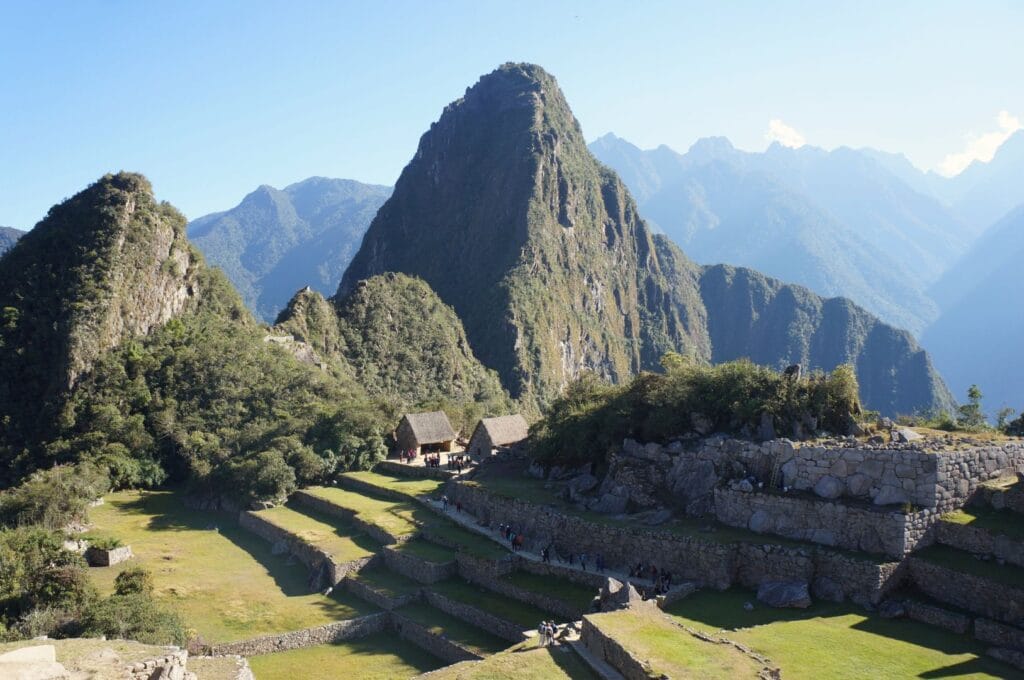
- Visiting Choquequirao, an alternative to Machu Picchu?
- What is the best time to visit Machu Picchu?
- How to get to Machu Picchu?
- Accommodation around Machu Picchu
- What are the treks that lead to Machu Picchu?
- Different tickets and circuits for Machu Picchu
- How to buy your Machu Picchu tickets
- Visit Machu Picchu
We visited Machu Picchu at the end of 2014, but the article was completely revised and updated in March 2024. If you see any price changes or have additional information that might be relevant, please feel free to leave us a comment!
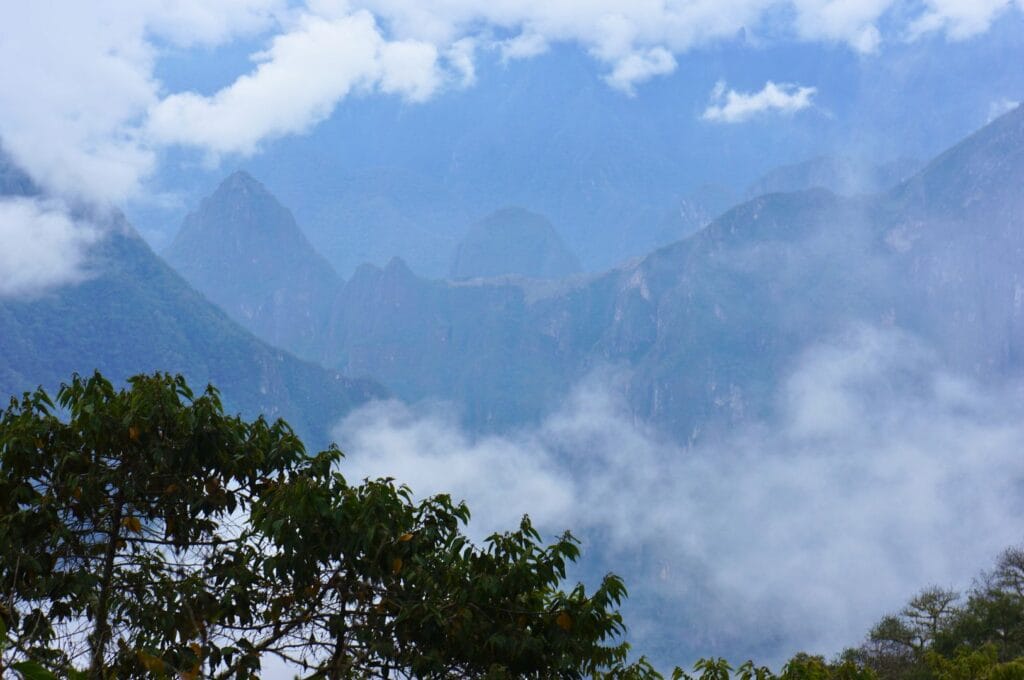
Visiting Choquequirao, an alternative to Machu Picchu?
We can’t talk about Machu Picchu without mentioning its little sister, the ruins of Choquequirao. Less known, less crowded, and just as admirable (or even more?), they truly deserve a visit, especially since their tranquility is threatened. Let’s say your trip to Peru doesn’t allow you to visit both Choquequirao and Machu Picchu at the same time. What to choose between these two Inca treasures? We’ll try to outline the differences between these 2 historical sites to help you make a decision.
Machu Picchu
Who doesn’t know Machu Picchu, a vestige of the Inca empire and a true emblem of Peru? Built during the reign of the Inca emperor Pachacútec in the 15th century, the Incas abandoned it following the invasion by Spanish conquistadors. The archaeological site was abandoned until it was brought to light in 1911 by the American Hiram Bingham! The citadel, listed as a UNESCO World Heritage Site, is the most visited monument in Peru with over 4500 tourists per day. However, finding a balance between regulating the number of travelers and protecting this new wonder of the world is not as simple…
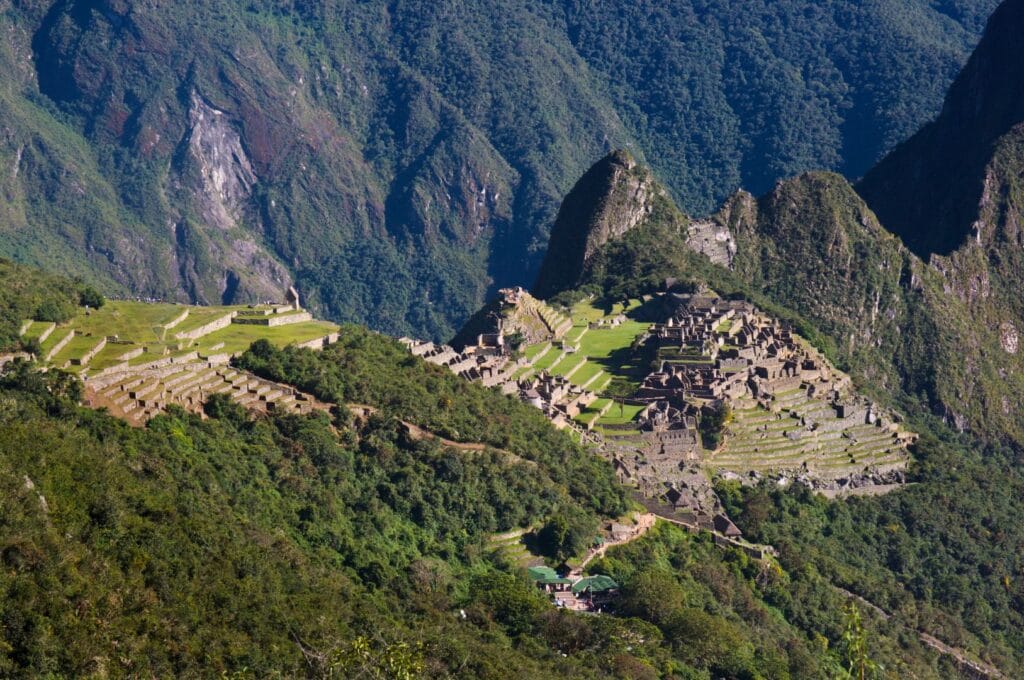
Choquequirao
For those who are not yet familiar with the ruins of Choquequirao, we can tell you without hesitation that it’s somewhat the new Machu Picchu! And if you want advice, we highly recommend visiting these ruins while there’s still time! Here are the 3 reasons why we affirm this.
Choquequirao, vast archaeological complex
Only 30% of the site is currently visible; the rest is still covered in vegetation! For example, the lower terraces would apparently be connected to the upper ones! Or if you prefer, 450 meters of elevation gain would be covered with terraces! Once the archaeological complex is cleared, it should be about twice as large as Machu Picchu. But these ruins are worth it since they are only accessible on foot! The Choquequirao trek takes between 3 and 5 days round trip to reach these remarkable ruins. To give you a point of comparison, only 8000 visitors per year venture on the trek… As much as it leaves hiking enthusiasts dreaming, it’s not particularly appealing to the general public, hence the next point…
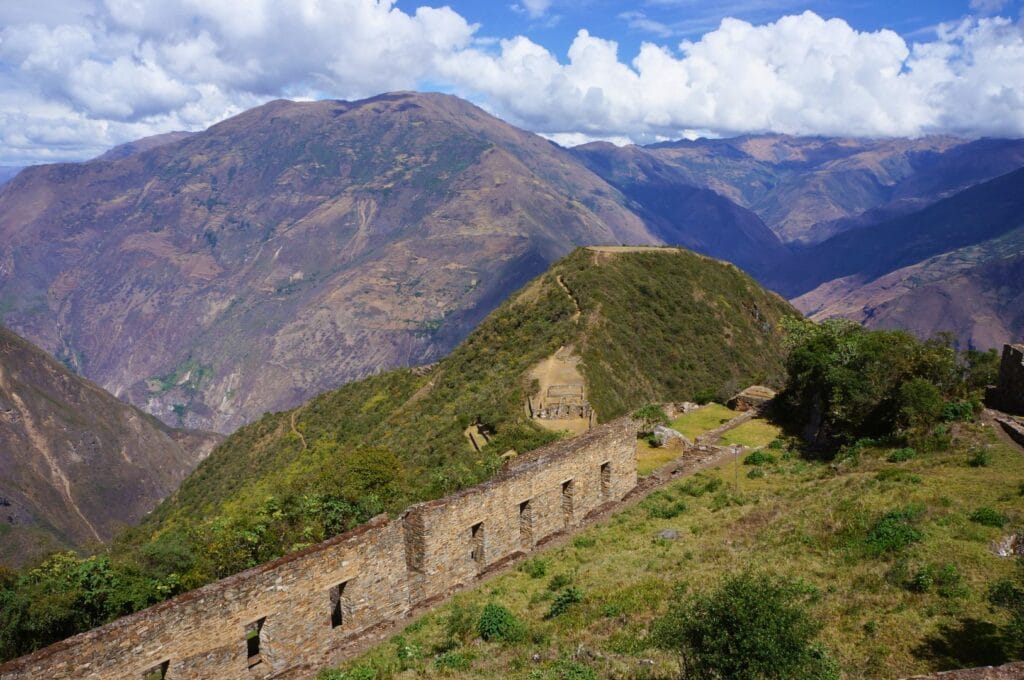
Construction of a cable car
To our great regret, we have learned that the tranquility of the place will soon be a thing of the past! Indeed, the Peruvian government has just approved the construction of a cable car to reach Choquequirao from the opposite valleys! Well, it’s been announced for years, but it seems that construction will start in a few months. In any case, visiting the ruins while being alone in the world will soon be impossible, unfortunately. And even more so, because of the last point…
Possible closure of Machu Picchu
We mentioned it earlier, and the valley’s inhabitants are talking a lot about this new burning issue. Machu Picchu suffers greatly from mass tourism, and it is becoming increasingly difficult to preserve this magnificent site with thousands of travelers treading its ground every day. As a result, the current project is to build viewpoints around Machu Picchu. Ultimately, it should only be possible to observe the ancient city from afar. This is where Choquequirao comes in: a viewpoint for Machu and a cable car for Choquequirao, to redirect some of the tourist flow from the former to the latter…
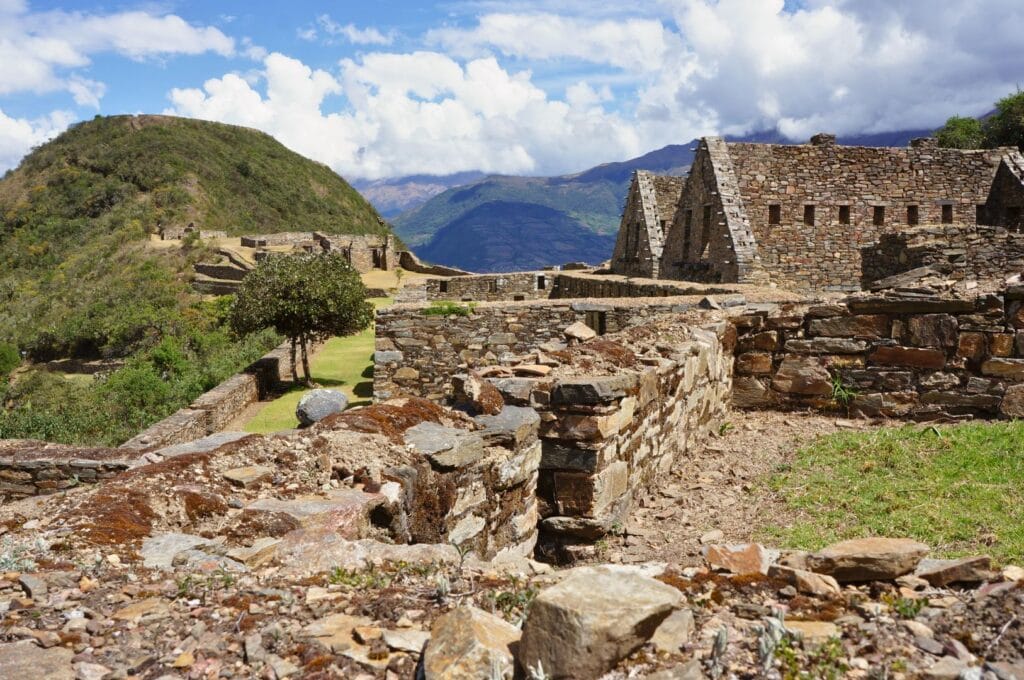
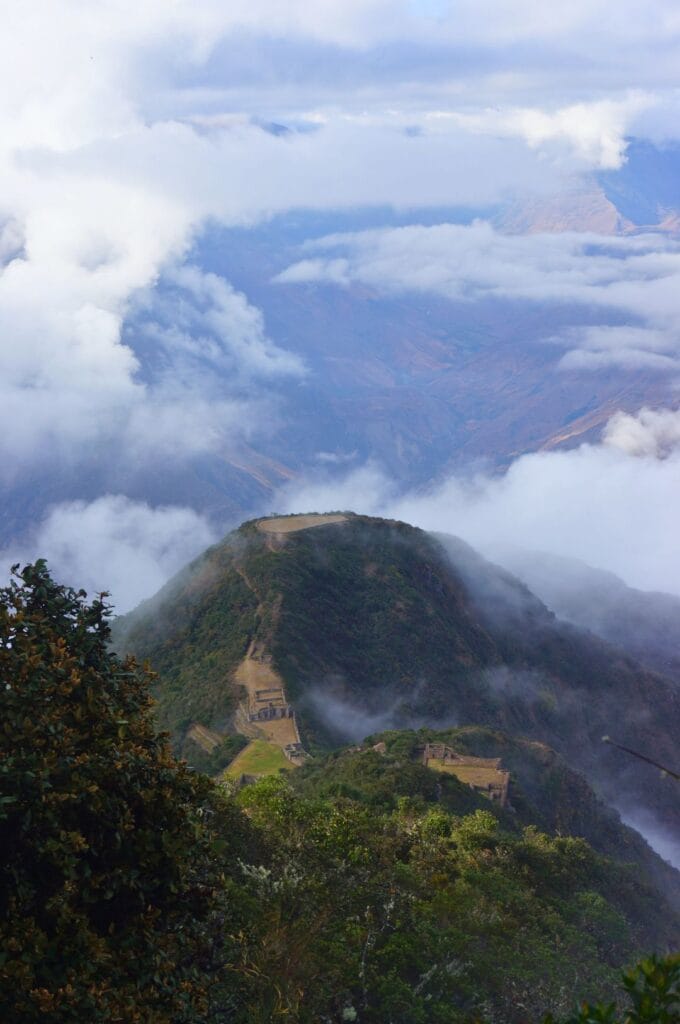
Our opinion
The moral of the story: visit Choquequirao now! Let’s face it, we’d love to be back here in a few years to see what it looks like once everything’s been cleaned up and it’s even bigger than Machu Picchu! At that point, we’ll probably take the cable car up, and come up with some great phrases that only the old-timers can say:
“Pffff… What a waste! And to think that a few years ago we walked here. There was nobody, and it was so much more authentic!” (We’re sharing this because we heard some elderly people say it at Machu Picchu a few days later 😉.)
To visit Machu Picchu’s little sister, check out our complete article on Choquequirao.
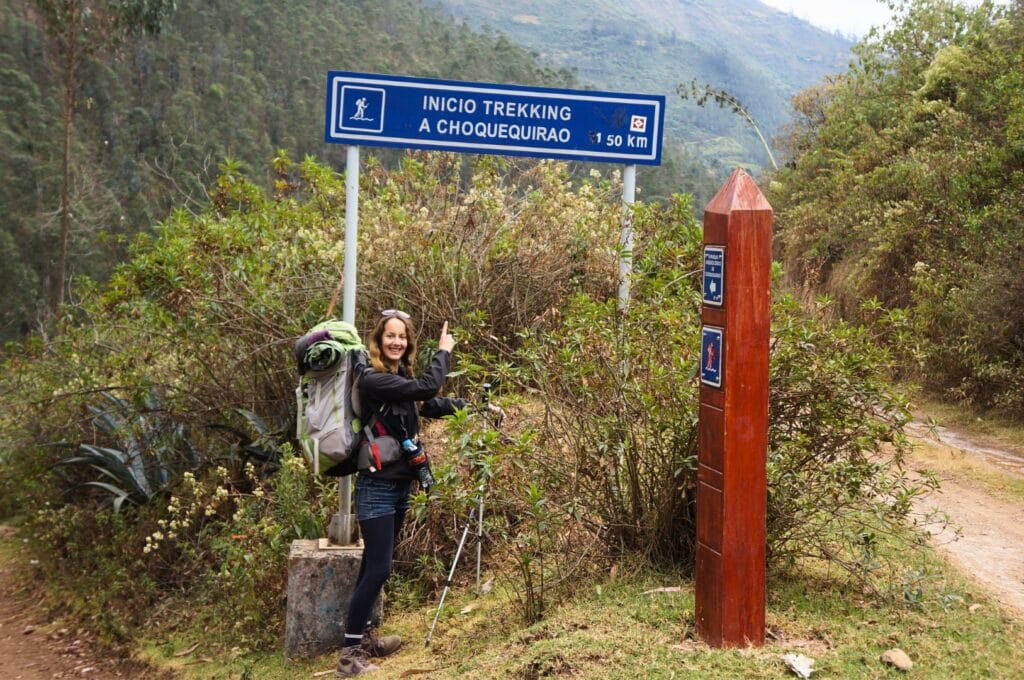
What is the best time to visit Machu Picchu?
Machu Picchu can be visited throughout the year, but to make the most of the lost city, avoid the rainy season between December and April. Sure, the crowds will be smaller during this period, but expect to get wet often! The best time to go to Machu Picchu is therefore from May to November, during the dry season, with a tourist peak during June, July, and August.
How to get to Machu Picchu?
Located in the province of Urubamba and on the edge of the Andes mountain range, Machu Picchu stands at an altitude of 2438 m, less than 100 km from Cusco. To get to Machu Picchu on your own or with an agency, you’ll need to first go to Hidroelectrica, then walk or take a train to Aguas Calientes, nicknamed the city of Machu Picchu. We detail the 2 ways to help you choose what suits you best. To give you an idea of the costs, we’ve summarized here the budget required to visit Machu.
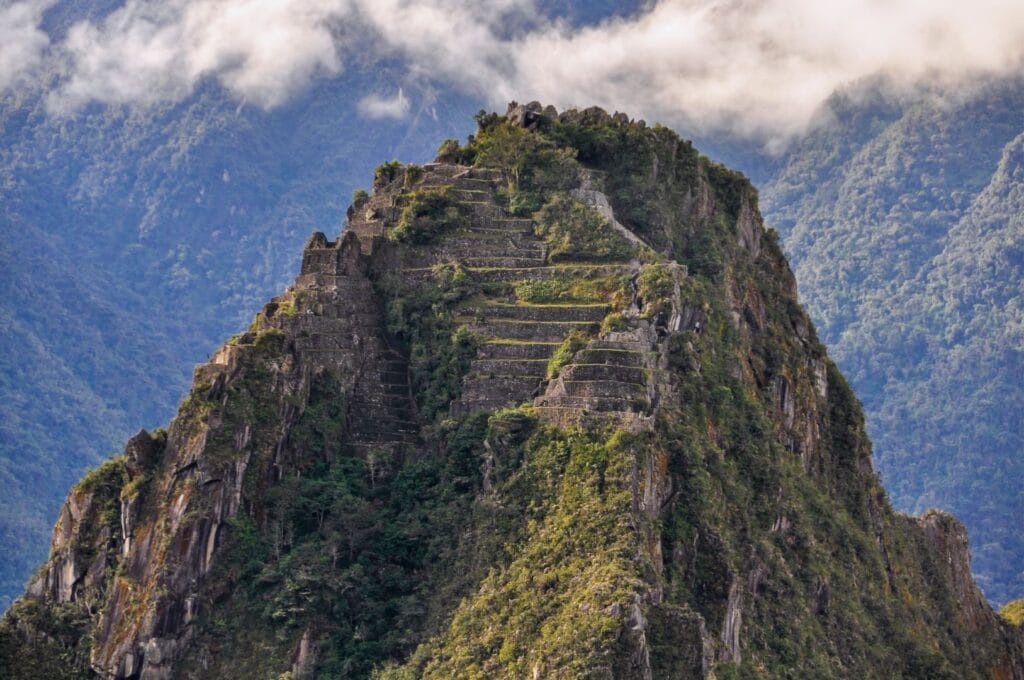
On your own
If you’re not trekking all the way to Machu Picchu, you must take public transportation to Hidroelectrica (Intihuatana by its real name), then head to Aguas Calientes, at the foot of Machu. Once you reach your destination, you have the choice to organize your day of visit as you wish or to entrust it to a guide.
From Cusco
From Cusco, several bus companies make the journey between Plaza de Armas to Hidroelectrica. It takes between 6 and 8 hours for a price between 55 and 75 soles in a minivan, semi-cama, or cama (where the seats recline partially or completely).
Once at Hidroelectrica, you can choose to travel the 10 kilometers in 2-3 hours to Aguas Calientes on foot along the rails (we’ll tell you about it here) or take the train (even more expensive than in Switzerland 😉). The lucrative company Peru Rail is the only one that makes the one-way trip between Hidroelectrica and the Machu Picchu station. If you choose the second option, you must book your tickets in advance (37 dollars per person).
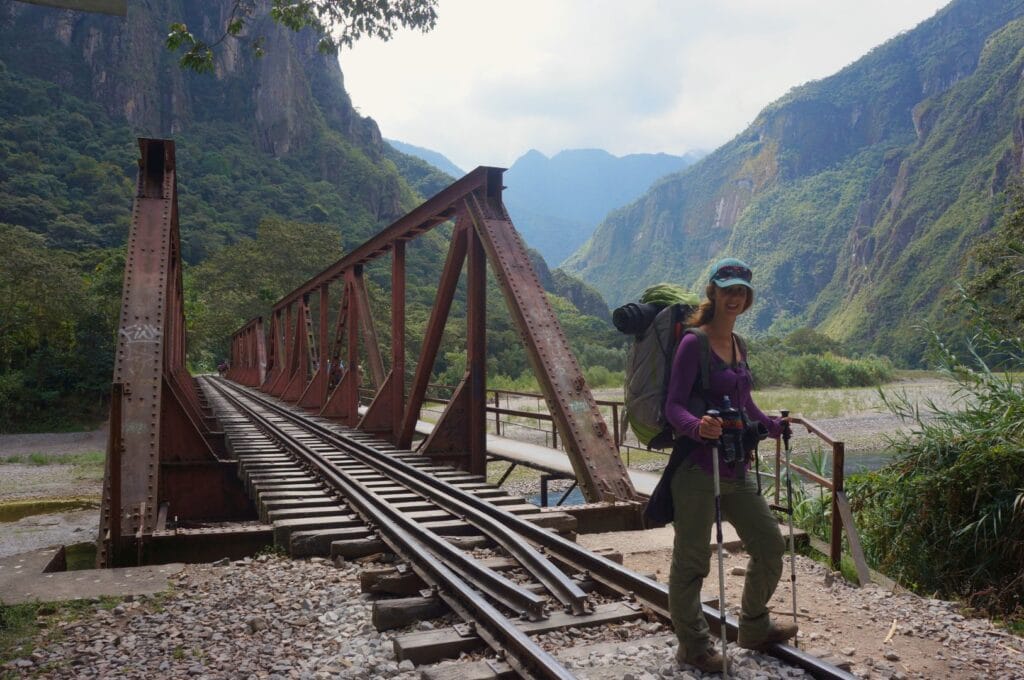
A simpler but more expensive option is to take the train from Cusco directly to the Machu Picchu station in Aguas Calientes. On the agenda: you cross the sacred valley with a panoramic view of the Andes in comfortable wagons. Trains depart daily and throughout the day and the journeys take 4 hours for 55 dollars. Book your train tickets here or here with your choice of train type:
- Expedition/Voyager, the cheapest;
- Vistadome/The 360° with panoramic windows to not miss any of the Andean landscapes;
- Vistadome Observatory/Premium & Lounge with a show of traditional music and dance;
- Hiram Bingham/First Class, the ultra-luxury version.
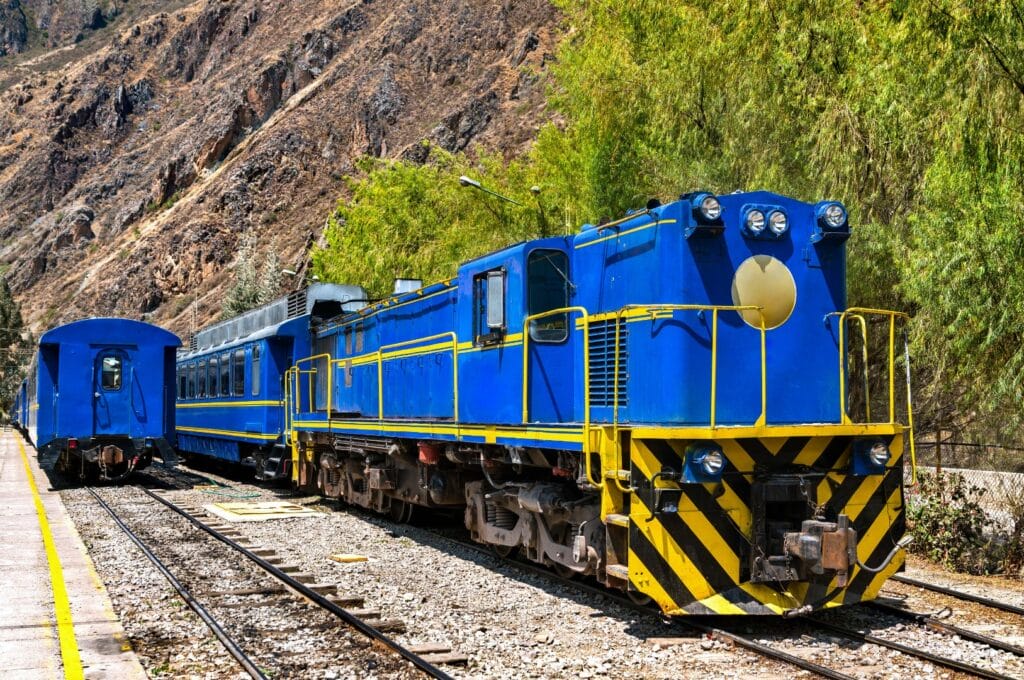
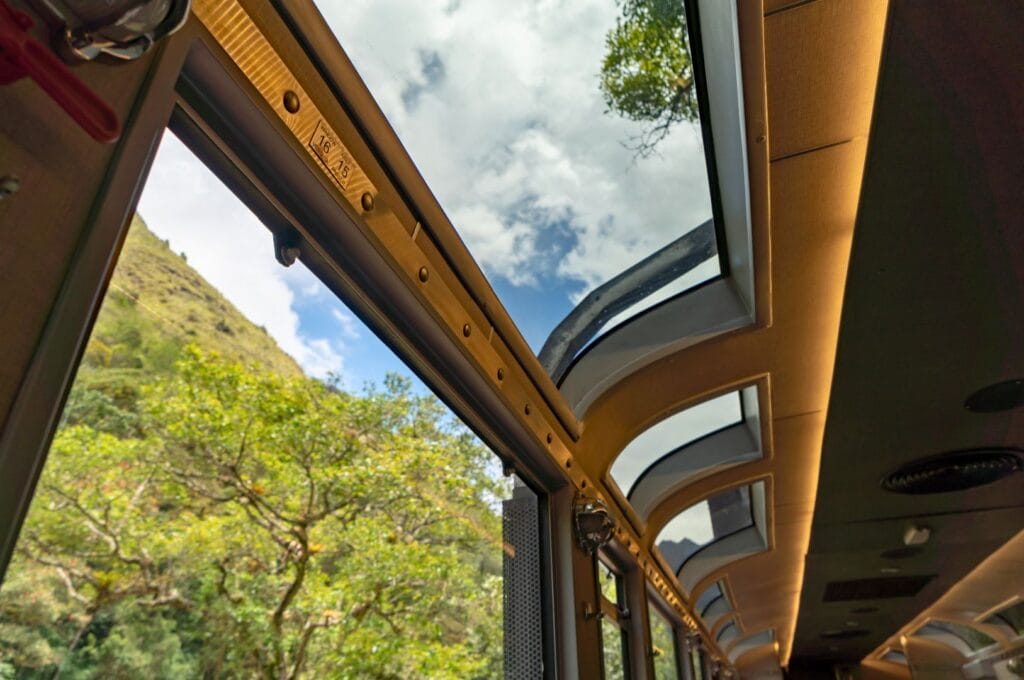
From Lima
From the capital city of Peru, Lima, it’s best to take transportation to Cusco before going to Hidroelectrica or Aguas Calientes. More than 1000 kilometers separate Lima from Cusco. By bus, expect to travel for 24 hours for 60 dollars each. By plane, it’s the same price (or even cheaper) for a 1-hour 20-minute flight. Whether you choose one or the other option, book your tickets here.
From Huaraz
Have you enjoyed Huaraz and its hikes in the Cordillera Blanca? Then you’re perfectly acclimated to do the Choquequirao trek or discover Machu Picchu. The easiest way is to go to Lima, then Cusco, before finishing the journey to Hidroelectrica/Aguas Calientes. Camas run day and night for an 8-hour journey starting at 17 dollars each. Several companies make the trip from Huaraz to Lima. Book your seat here.
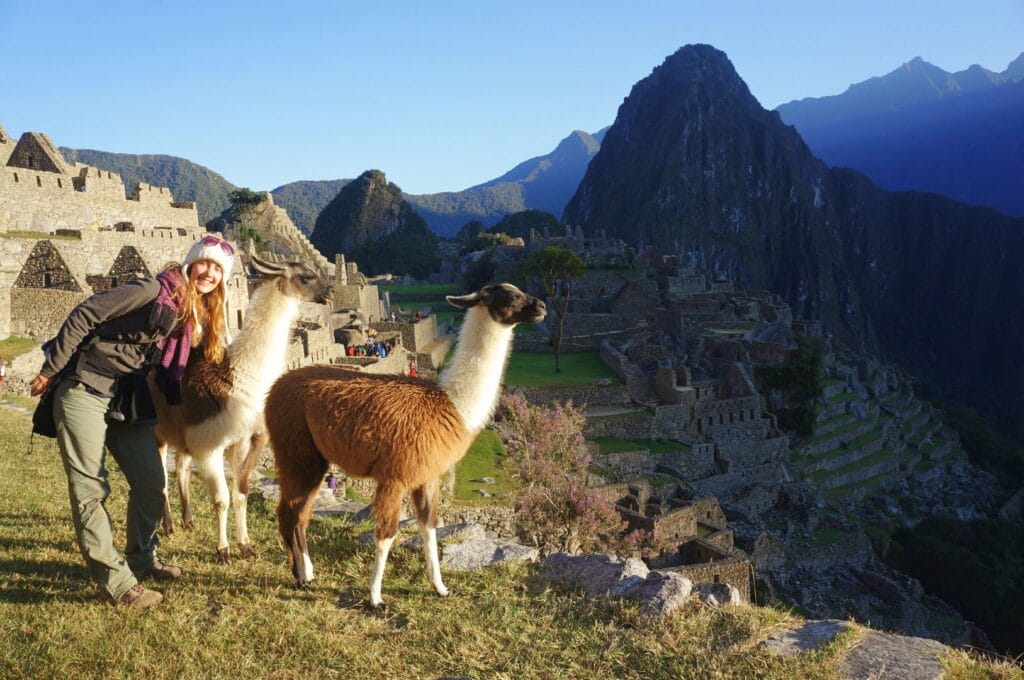
This article contains affiliate links to partner sites. When you use our links to book accommodation, a car, or an activity, you don’t pay anything extra, but we get a small commission. This helps us to offer you free, independent, and ad-free content. Thank you for your support!
By guided tour
This is the simplest, hassle-free solution where you let yourself be guided from Cusco to Aguas Caliente. However, the price will be higher than if you organize everything from A to Z. Organized tours include for the most part: round-trip transportation by bus or train, transport to the gates of Machu Picchu, entrance tickets and a guide. We’ve selected for you tours with the best value for money according to multiple options. To help you navigate among the tickets and visiting circuits, we’ve written a whole section here.
For 1-day tours, we recommend this tour and that tour, which offer a complete experience and will show you the best of Machu Picchu from your hotel in Cusco. You even have the option to choose the train, panoramic or not, and take visiting circuit number 5. If you prefer to try Huayna Picchu mountain (circuit 4), this is the tour for you!
2, 3, or 4-day tours:
- discover the highlights of the sacred valley in 2 days by train with a visit to the village of Ollantaytambo and its archaeological site before discovering Machu;
- combine nature with the trek to Humantay Lake and history with Machu in 2 days;
- fully enjoy your trip to Cusco and Machu Picchu thanks to the free time offered by this 3-day tour after the guided visits;
- from Cusco, you can combine the visit to Machu Picchu with the famous 7-colored mountain (also called Rainbow Mountain or Vinicunca by its real name) thanks to this 3-day stay or this 4-day one.
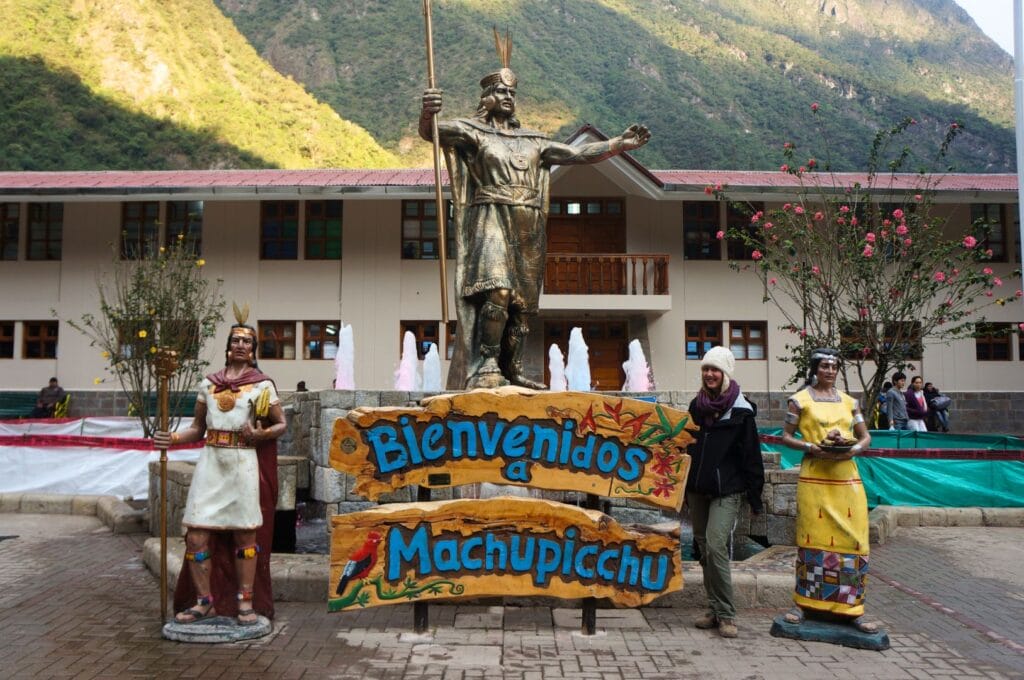
Accommodation around Machu Picchu
During our Choquequirao trek, we were so tired after our 20 km of the day (and 8 days of walking) that we took the first hotel in Aguas Calientes. Well, the hotel wasn’t transcendent, but we were very happy to have hot water. Here are our recommendations for places to stay in the city of Machu Picchu.
Campgrounds:
- Mandor Camp camping, located 30 minutes from the entrance to Machu, with a nice park (10 soles);
- the municipal camping, just after the entrance to Machu Picchu.
Hostels:
- Supertramp Hostel Machupicchu: a nice hostel well located with a very good value for money for the city (from 16 dollars per night in a dormitory) and breakfast is included (and even served early in the morning before your visit to Machu!);
- Casa Machu Picchu Hostel: a budget hostel that offers everything you expect from a hostel: it’s simple, no frills, with a serious staff.
Hotels and guesthouses:
- ECO ART: looking for the best view from Aguas Calientes for a reasonable price? Look no further!
- Thais House Machupicchu: a small comfortable hotel that offers an excellent breakfast (served even very early before your visit to Machu Picchu) and undoubtedly has the best value for money in the city.
- Rupa Rupa High Jungle Eco B&B: this is the charming hotel par excellence to treat yourself after a trek or take a well-deserved break with a magnificent view of the surrounding nature.

What are the treks that lead to Machu Picchu?
Do you have several days free in your schedule? Why not opt for a trek to visit Machu Picchu if you’re fond of hiking? There’s no shortage of options, so let’s review the possibilities available to you.
Note: don’t forget to acclimatize in Cusco if you start your trip to Peru with Machu Picchu! Height is no joke; it’s the best way to get altitude sickness…
Choquequirao trek
This is the option we chose, and we can only recommend this long hike! In addition to seeing Machu Picchu, you’ll also visit the Choquequirao complex, less known than the former but equally incredible! This route corresponds to the Yanama Route, 9 days to cover 132 kilometers! Since the number of people on the trail is limited, you won’t be bothered by crowds (at least until you reach Hidroelectrica). Find our complete article on the Choquequirao trek here.
- 132 kilometers in 9 days
- 9113 meters of positive elevation gain
- Independently or with an agency
- Departure: Cachora
- Arrival: Intihuatana
- Highlights: Choquequirao, San Juan Pass, Machu Picchu
- Price: from 500 dollars with an agency (approximately 250 dollars solo)
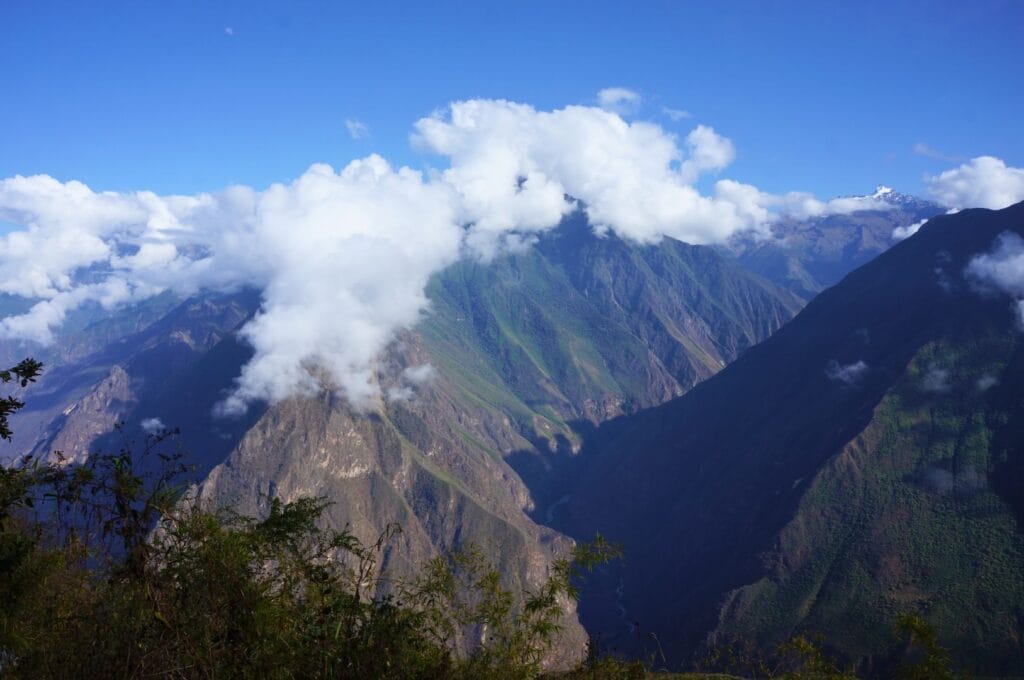
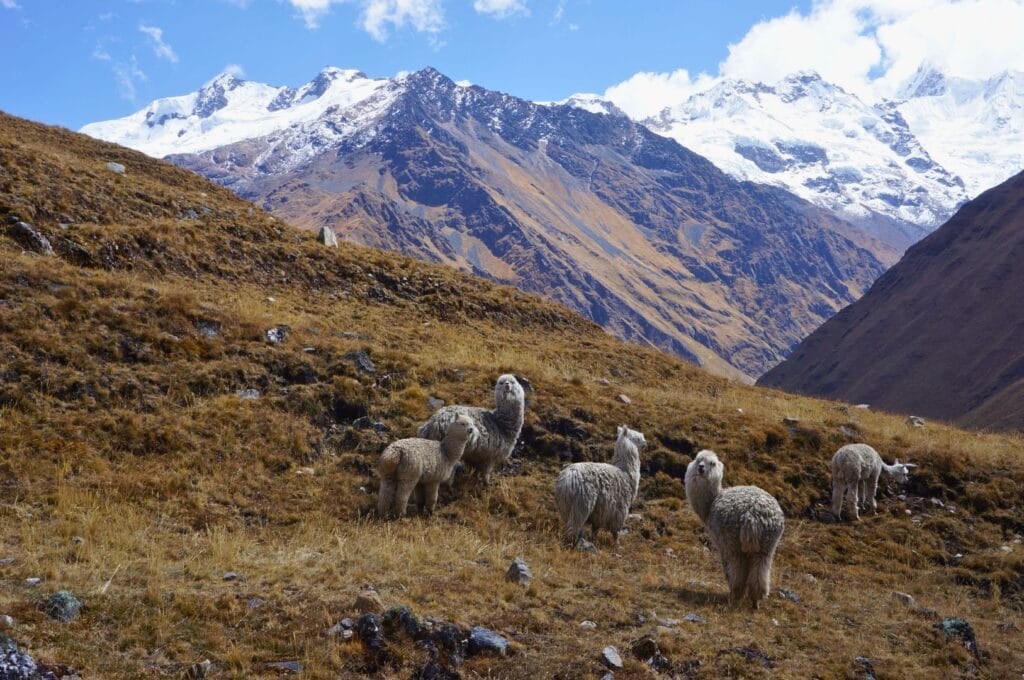
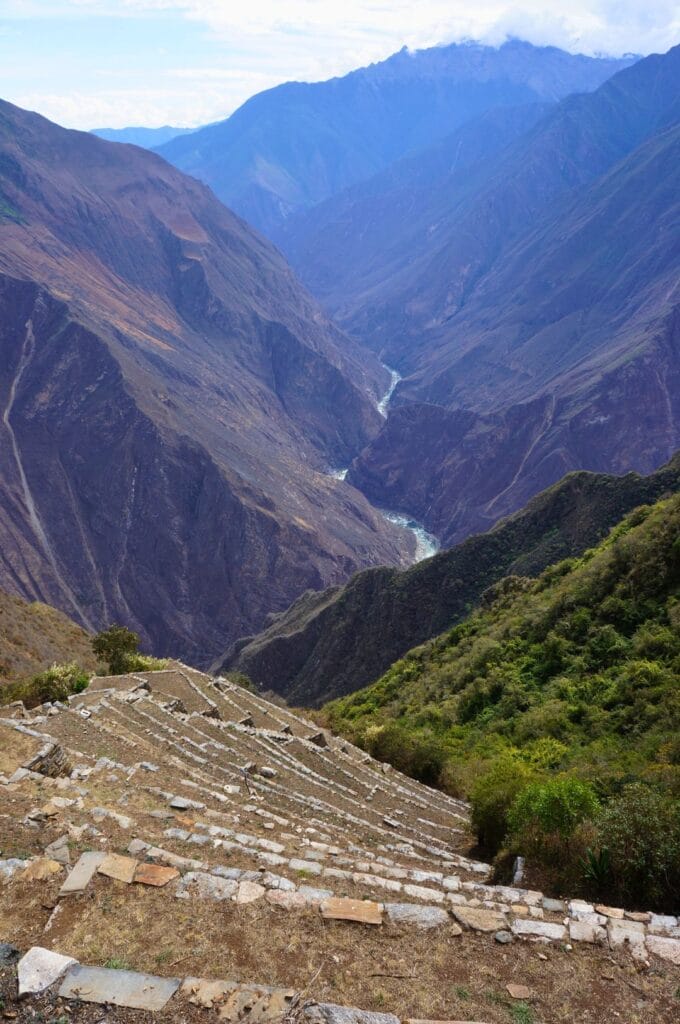
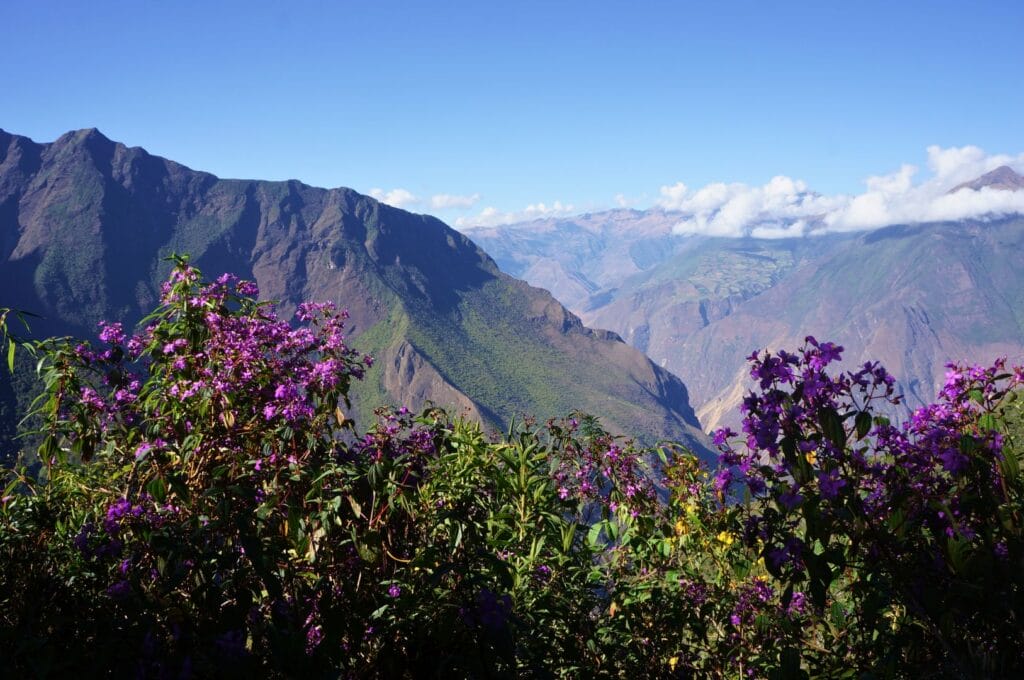
Inca Trail Trek
The Inca Trail trek is undoubtedly the most popular trek to reach Machu Picchu! As the name suggests, this trail is one of the best-preserved sections of the vast network of 40,000 km of trails that the Incas used, called Qhapaq Ñan. As a result, you’ll see many archaeological remains throughout the trek, especially if you do the 4-day trek. Moreover, the Inca Trail is the only trek that arrives directly at Machu Picchu through the Sun Gate (Inti Punku). You’ll then do circuit 1-C with your guide. The others all end in Aguas Calientes (so they involve organizing early in the morning to visit Machu).
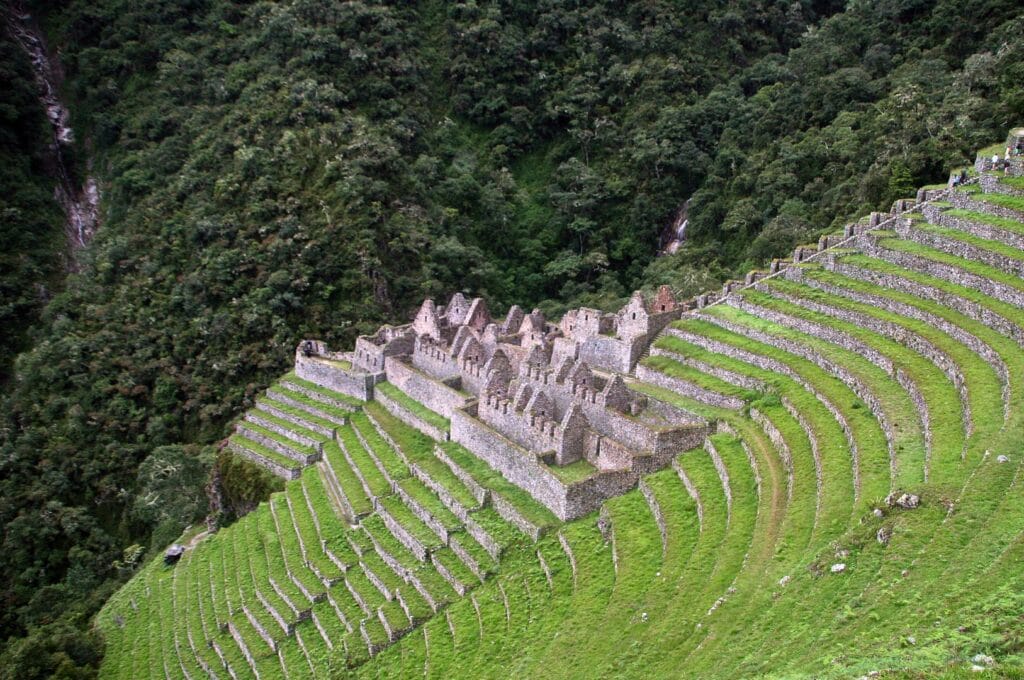
An advantage over the Choquequirao trek is that it’s shorter: only 2 or 4 days. However, it’s forbidden to do the Inca Trail trek independently; you must take a guide through an all-inclusive tour. And since the number of tourists on the Inca Trail is limited to 200 per day (500 in total including guides and porters), it’s better to book in advance. Some agencies highlight remaining availability (like this table), but don’t rely on it; I was able to simulate bookings with other agencies on days supposed to be full. In short, they don’t hesitate to highlight availability to make you change your plans or book another day.
In any case, it’s best to book at least 1-2 months in advance, or even 3-4 months in advance, especially during the high tourist season of Machu Picchu. So if you plan to visit Peru from May to November, don’t wait too long. If you have more time and are a frequent hiker, we recommend the Choquequirao trek independently.
Note that the Inca Trail is closed during February for safety reasons due to the rains in the area. It’s also an opportunity to maintain the path trodden by thousands of people…
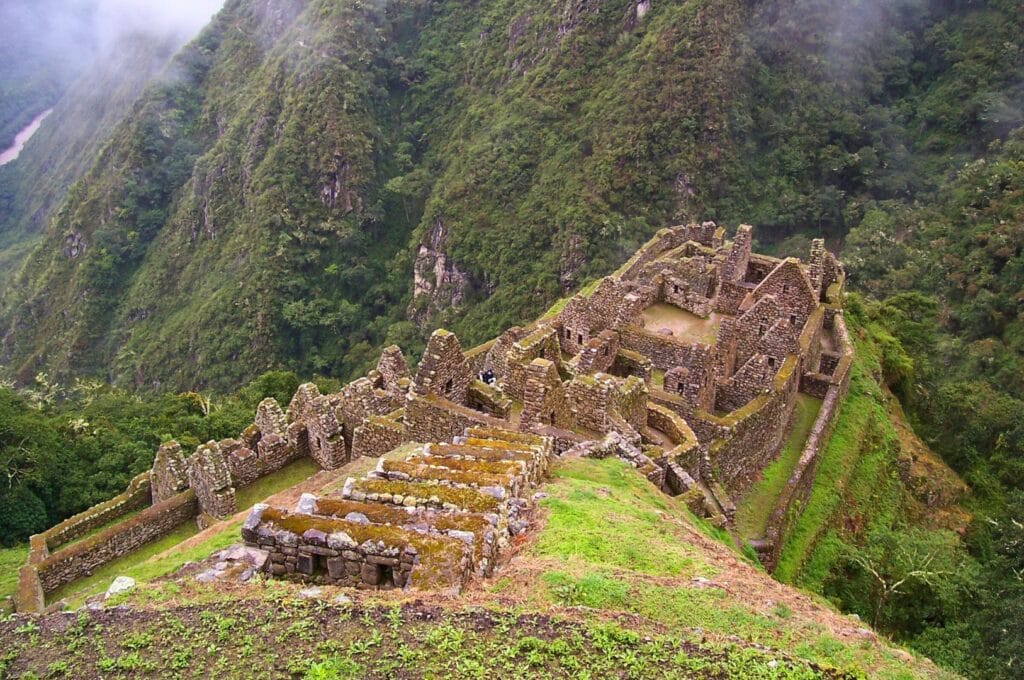
2-Day Inca Trail
- 13.1 kilometers in 2 days
- 1081 meters of positive elevation gain
- Guide required
- Departure: at kilometer 104 station (transport from Cusco)
- Arrival: Aguas Calientes (transport to Cusco)
- Highlights: Chachabamba, Wiñay Wayna, Inti Punku (the Sun Gate) depending on the tours, Machu Picchu
- Prix: from 500 dollars
4-Day Inca Trail
- 33.6 kilometers in 4 days
- 2867 meters of positive elevation gain
- Guide required
- Departure: km 82 at Ollaytantambo station to Piskacucho at 2720 m altitude (transport from Cusco)
- Arrival: Machu Picchu (then transport to Piskacucho and Cusco)
- Highlights: Patallacta archaeological ruins (Llactapata), Warmiwañusca Pass at 4200 m (Dead Woman’s Pass), Runkurakay archaeological complex, Phuyupatamarca (village in the clouds), Sayacmarca ruins, Wiñay Wayna, Inti Punku (the Sun Gate) and views of Machu Picchu and Wayna Picchu
- Price: from 750 dollars
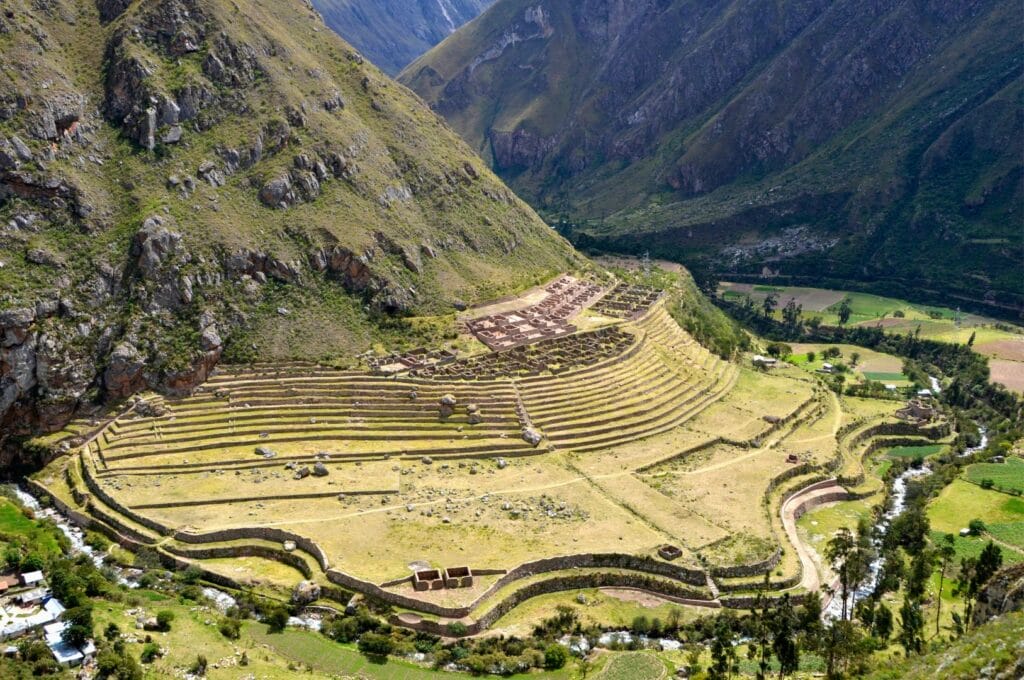
Inca Jungle Trail
As an alternative to the Inca Trail, the Inca Jungle Trail is a trek that offers different activities on the route between Cusco and Machu Picchu. Less popular than the classic version, here mountain biking, hiking the Inca Trail, hot springs at Santa Teresa, zip-lining and rafting form the basis of the trek’s program. Thrill-seekers take note! This long trek of 4-5 days therefore requires a guide.
To discover the different circuits of the jungle version of the Inca Trail, click here or there!
Salkantay trek
The Salkantay trek ranks second among the treks to reach Machu Picchu, behind the Inca Trail and ahead of the Choquequirao trek. And for good reason, it’s not regulated in the sense that the number of hikers on the trail per day is not limited. If the Inca Trail is more focused on the historical aspect, the Salkantay highlights nature and the diversity of the region’s flora. The landscapes somewhat resemble those of Santa Cruz with glaciers and lagoons. It is regularly listed as one of the world’s best treks.
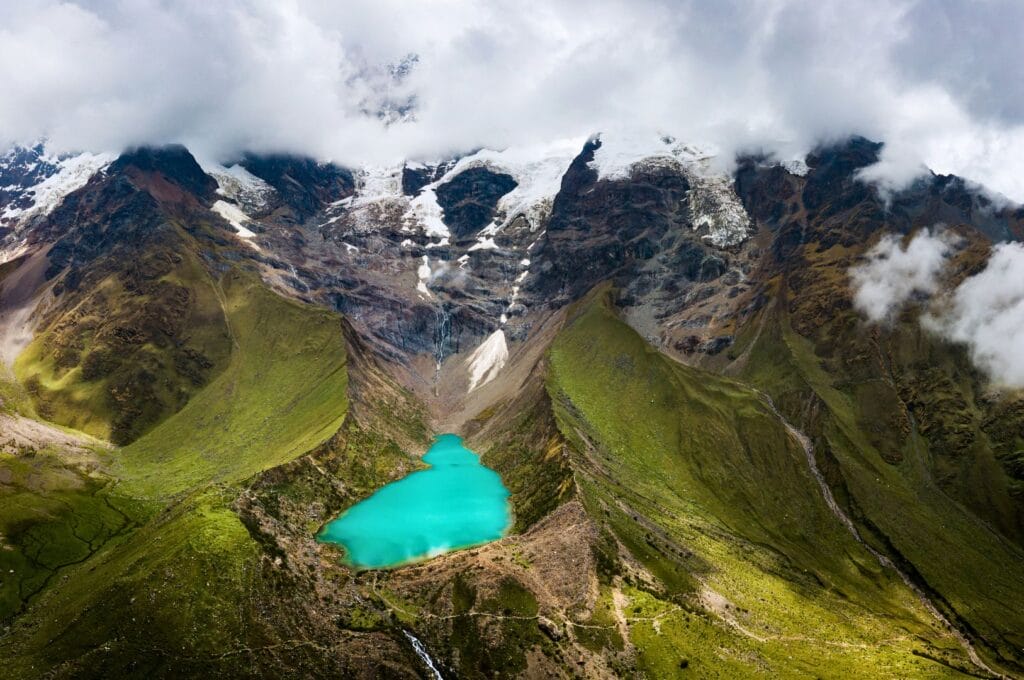
Less known and more available, the Salkantay trek is also longer and more difficult than the Inca Trail. You have the choice to do it independently or take a tour with an agency. The highlight of the trek is the Salkantay Pass, at nearly 4700 meters altitude, where you’ll have a breathtaking view of Salkantay (6271 m). The most popular is the 5-day trek, but you can also do the Salkantay trek in 6 or 7 days. Part of the trek is shared with the Choquequirao trek, starting from Collpapampa to Aguas Calientes.
- 70 kilometers in 5 days
- 3547 meters of positive elevation gain
- Independently or with an agency
- Departure: Soraypampa or Challacancha
- Arrival: Intihuatana
- Highlights: Humantay Lake (Humantay Ccocha, which can be visited from Cusco), Salkantay Pass, tropical forest, Cocalmayo hot springs in Santa Teresa (if with an agency), Machu Picchu
- Price: from 500 dollars/person with agency (approximately 150 dollars per person independently)
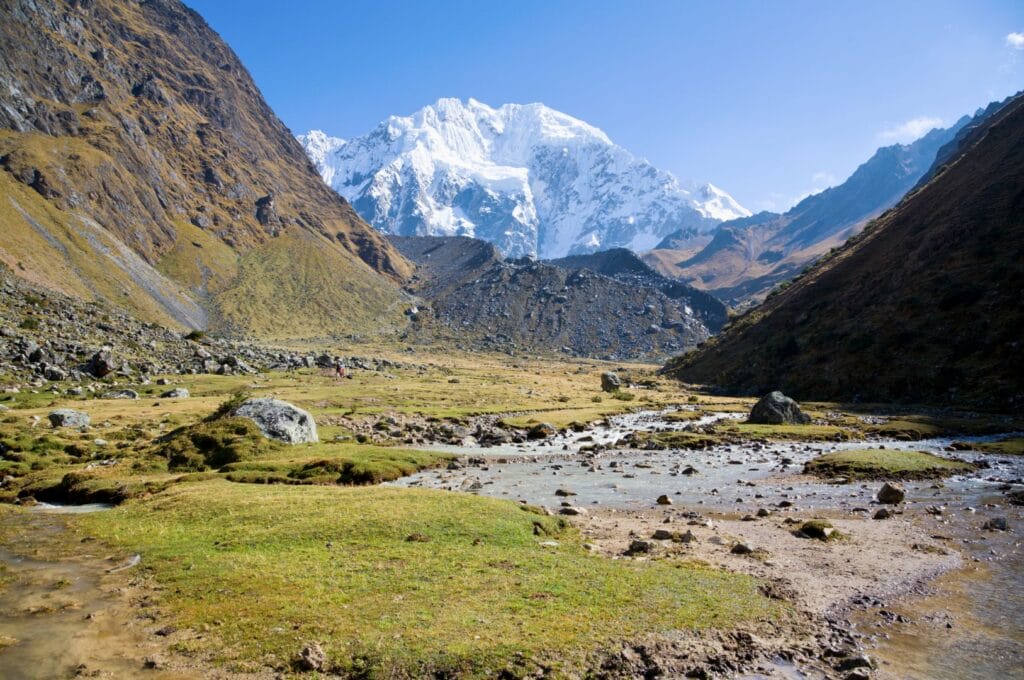
Lares trek
More confidential than the others, the Lares trek is a long hike focused on Andean culture and nature. The trail passes through the magnificent Sacred Valley and crosses authentic villages to meet the local populations. Several itineraries are possible, and you can do it independently or with a guide. Departure is from the Lares hot springs or Pumahuenca, and the arrival is in Ollantaytambo. From there, you just need to take the train to Aguas Calientes and Machu Picchu. Easier than the other treks due to its less significant elevation changes, you can do the Lares trek in 4 days.
Other treks also start or end around Ollantaytambo: the Vilcabamba trek, the Huchuy Qosqo trek, and the Cachicata (or Chaksi) trek.
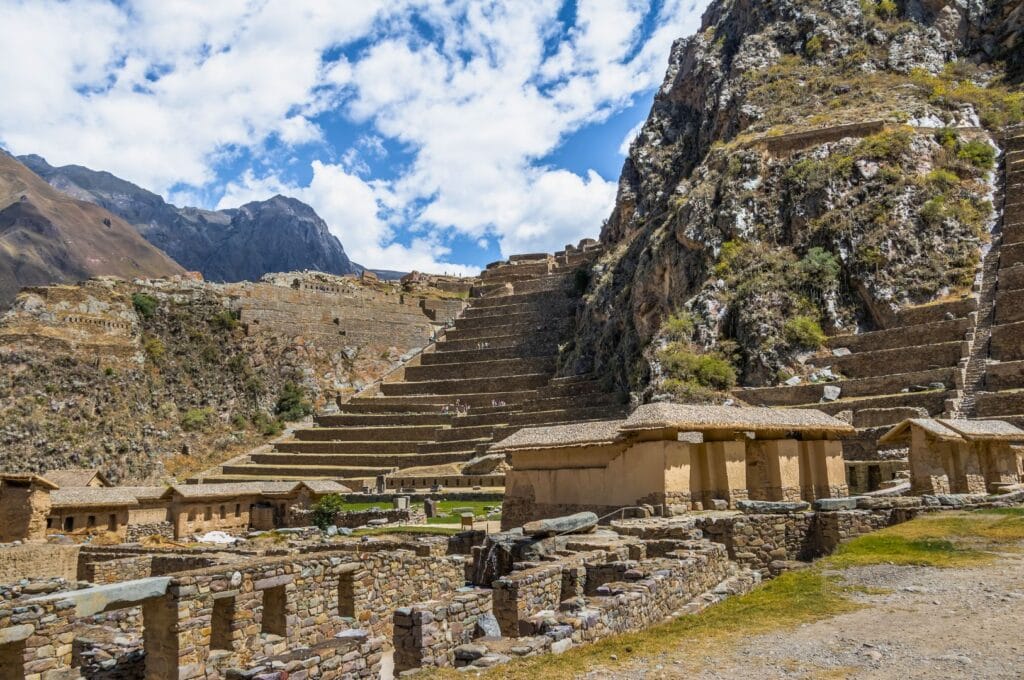
Different tickets and circuits for Machu Picchu
As you know, it’s now necessary to book your entrance ticket to Machu Picchu in advance. Unless you’re going on a tour, it’s impossible to buy a ticket for the next day. However, with so many circuits offered, it’s easy to get lost in the options. Let’s break down the different types of visits within Machu Picchu to help you make your choice.
Circuit 1 – Panorámico
Circuit 1 is the panoramic route that takes you to the southern part of the site, in the upper section of Machu Picchu. It’s divided into 4 routes, and all of them offer the view from the Guardian’s House for the typical Machu Picchu photo. The only difference lies in whether or not you want to gain some elevation. When booking, you’ll need to choose among these 4 itineraries:
Ruta 1-A
In addition to the “classic” viewpoint, itinerary 1-A takes you up the slopes of Machu Picchu Mountain. Get ready to tackle 1,900 steps to the summit! Fair warning: it’s very steep – 520m elevation gain over 1.6km! Be careful if you’re afraid of heights; the descent can be intimidating, and there isn’t much to hold onto. Count about 1.5 hours to climb to the summit of Montaña Machu Picchu at 3,010m altitude. A breathtaking view of the entire site is guaranteed! The entire route 1-A is 3.8km long, here’s the map. The ticket price is 200 soles.
Note: Only 300 people are allowed to climb the mountain during two entry time slots: between 6-7 a.m. and 8-9 a.m.
Ruta 1-B
If climbing 1,900 steps doesn’t appeal to you, opt for this 1.6km itinerary (100m elevation gain) that crosses the upper terrace. In short, it’s the basic path that includes the iconic view – the same as 1-A without the Machu Picchu Mountain climb. The ticket for 1-B costs 152 soles.
Ruta 1-C
Route 1-C takes you to the southern part of Machu Picchu (1-B) and to the Sun Gate, Inti Punku, where the Inca Trail arrives. In total, you’ll walk 3.4km with a 380m elevation gain (map). This can be a good option to gain some height without too much effort. The entrance fee for 1-C is 152 soles. Please note: 1-C is only available in the high season, between mid-June and November 2nd.
Ruta 1-D
Finally, itinerary 1-D follows 1-B plus the trail to the Inca Bridge (Puente Inka). This makes for a good walk on a stone path of 2.4km with a 380m elevation gain. If you’re afraid of heights, we don’t recommend it, as some passages are along cliff edges. The ticket price is 152 soles. Note: 1-D is only available during high season, between mid-June and November 2nd.
Circuit 2 – Clásico
Circuit 2 is divided into two itineraries that have very few differences, honestly. Routes 2-A and 2-B cross the entire Machu Picchu site from north to south. They’re designed for people who want to see the base of Machu Picchu. In both cases, you’ll pass through the Hall of Mirrors (conjunto espejos de agua), the Sacred Rock (roca sagrada), and the entire urban area of the site. The path is less than 2km with 100m elevation gain (150m for 2-B). Prices are also the same, 152 soles per person. The difference is that 2-B passes by the Guardian’s House at the beginning – THE photo spot of the site. It doesn’t pass by the Sun Temple viewpoint but goes through the quarry instead. In short, if choosing between the two, we recommend 2-B. Click here to see the 2-A map.
Circuit 3 – Machupicchu realeza
Ruta 3-A
You’ll cross the site through the agricultural zone with its terraces and the Sun Temple to reach the sacred rock. There begins the climb up Wayna Picchu (Huayna Picchu), the most popular hiking trail at Machu Picchu! Since spots to reach its summit are limited, book your ticket in advance (200 soles per person). From the rock to Wayna Picchu’s summit, the trail is 1.5 km round trip with 315m elevation gain (and the same descent). Be careful climbing up – the steps are narrow and steep! Afterward, you’ll pass through the urban zone before returning to the site entrance. In total, route 3-A is about 3 km with 370m elevation gain. Allow 2.5-3 hours for this hike.
Overall, Route 3-A is about 3 km long and 370 m ascent. Allow a good 2 hrs 30-3 hrs for this hike. Find the map here.
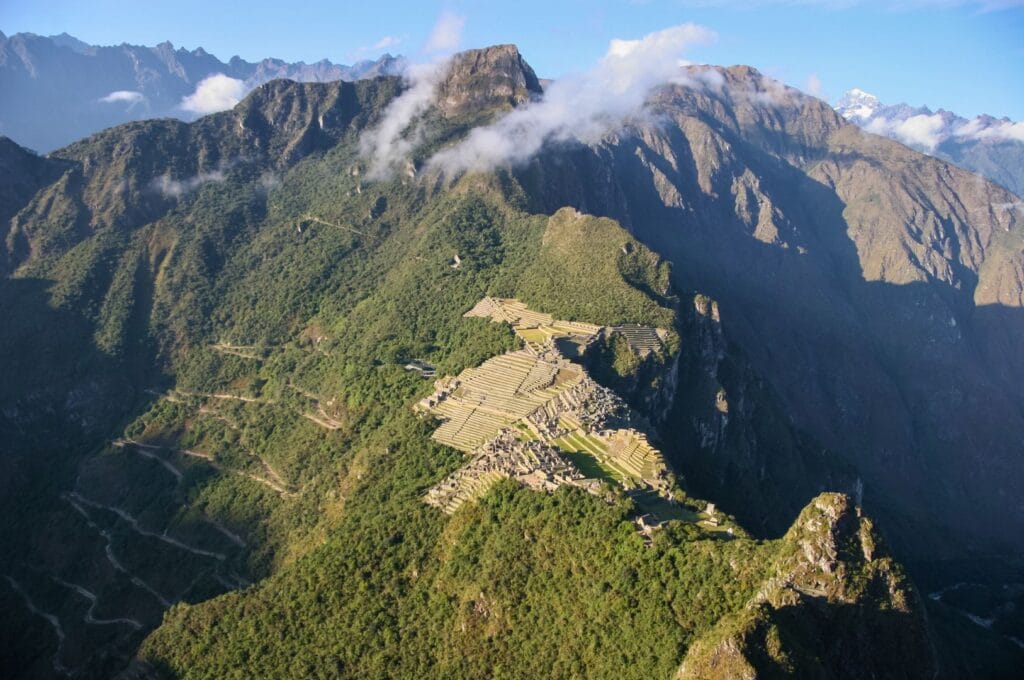
Ruta 3-B
This itinerary is perfect if you don’t like climbing much. It’s the base route that connects to different mountain ascents – essentially 3-A without the Wayna Picchu climb. This path is about 1.3 km with 80m elevation gain and tickets cost 152 soles each. Note: this is the only itinerary with a section reserved for people with reduced mobility.
Ruta 3-C
Beyond 3-B, this trail also leads to Wayna Picchu’s slopes, without reaching the summit like 3-A. You’ll go to an ancient Inca temple, the Moon Temple, in the Gran Caverna, a cave carved into the mountain. You can’t make a loop to pass by the summit on return – there are checkpoints at the junction of routes 3-A and 3-C. Click here for the itinerary. The total trail length is 4.4 km with 500m elevation gain. Note: 3-C is only available during high season, between mid-June and November 2nd.
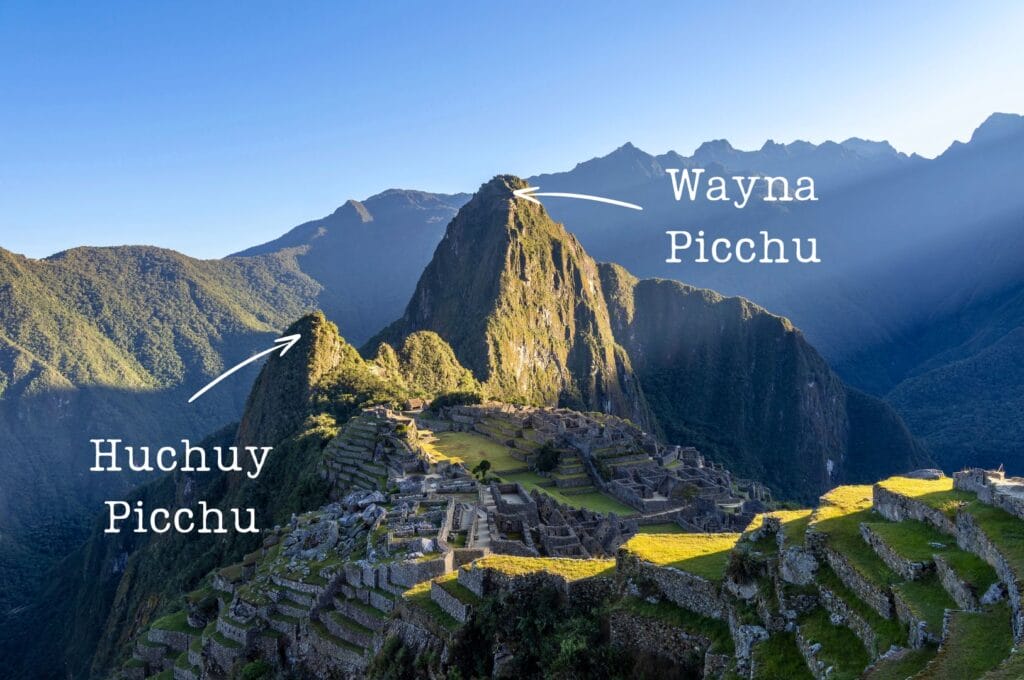
Wayna Picchu (Huayna Picchu) Mountain is the most popular hiking trail at Machu Picchu. As places to reach its summit are limited, plan by booking your ticket in advance (200 soles per person). In total, the trail is a 1.5 km round trip for 315 meters of positive elevation gain (and the same negative). Again, be cautious on the ascent, the steps are narrow and it remains steep! Allow a good 2-2.5 hours for this challenging hike.
Ruta 3-D
Finally, after Wayna Picchu and Gran Caverna, there’s Huchuy Picchu Mountain. Much less physically demanding than Wayna, it’s a short hike from the sacred rock – 400 meters round trip via narrow steps with minimal elevation gain (40m up and down). Still, it’s steep for this short distance… The ticket is cheaper at 152 soles per person. We recommend this as an alternative to Huayna Picchu (3-A) and Montaña Machu Picchu (1-A) if you want a 360° view of the city and valley without too much effort. To see the map, click here. Please note: 1-C is only available in the high season, between late June and November 2nd.
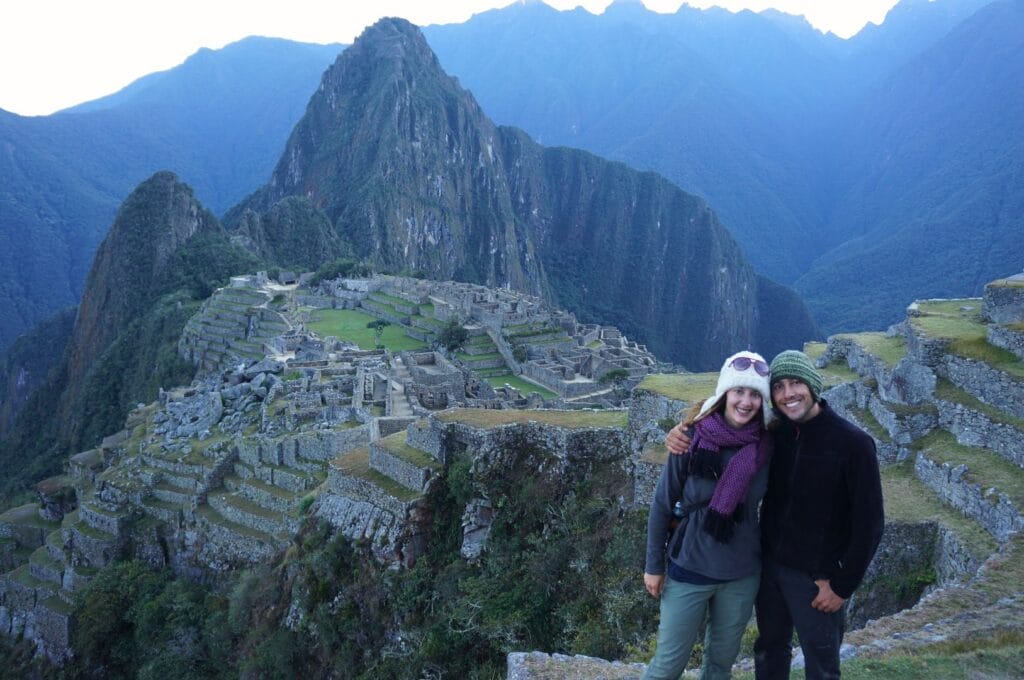
Our advice
So, we didn’t do any hikes to the mountains since it was our 9th day of walking. If you’re doing an independent trek to Machu, we’d advise you to take circuit 1 (1-B or 1-D) or circuit 2 (2-B). This way, you’ll have the classic view of Machu without having to walk too much.
If you feel fit enough (or think you will be, since you need to book in advance), then take itinerary 1-A or 3-A. This way, if on the day you feel able to climb hundreds more steps to reach one of the mountains, you can access the hike in addition to the circuit. If in doubt, the 3-D trail with Huchuy Picchu offers the best effort/reward ratio as the trail is very short. And if you’re staying an extra night in Aguas Calientes, the ideal would be to combine 2-B with one of the mountains of your choice depending on your physical condition.
Please note that it is forbidden to leave and re-enter the Machu Picchu site. Yes, it’s entirely possible to combine tickets but keep in mind the visiting times if you’re leaving in the afternoon.
An example of a combination: circuit 1-B at 6 a.m. to have the most famous view of Machu Picchu at sunrise, then circuit 3-A at 7 a.m. to climb Wayna Picchu. In this configuration, if you need to use the restroom, take advantage of it to exit the site (the toilets are at the exit) before entering a second time.
Also, the circuits are organized in one-way directions. As you cannot backtrack (the guards are watchful), make the most of every moment if you are doing only one circuit!
The time slot on your ticket indicates the time you must arrive at the site, except for circuits 3 and 4, which involve hiking to the mountains. For these, the slot indicates the time you must start the hike. For example: if you bought circuit 3-A with access to Wayna Picchu at 7 a.m., theoretically, you can enter the Machu Picchu site from 6 a.m. (double-check on your ticket), but you must be at the Sacred Rock between 7 and 8 a.m. to begin the ascent of Wayna Picchu Mountain.
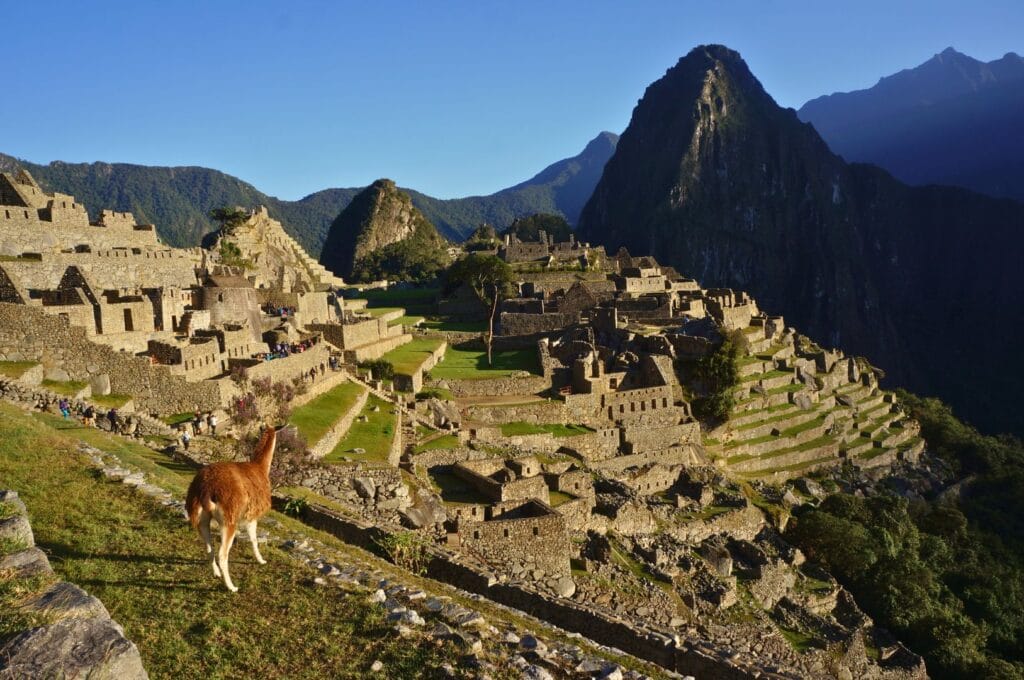
How to buy your Machu Picchu tickets
Are you planning to visit Machu Picchu during the high season? Then book at least 2 months in advance, especially for circuit 4 with Wayna Picchu. During the low season, you can book about 1 month in advance. Here are the steps to follow to obtain the precious tickets, whether you do it yourself or go through an agency.
On your own
To buy your tickets online, the official site is this one. It may crash, so try again several times or wait a few minutes. Be cautious because scams are common. It’s like visas, only visit government websites.
Tip: if you want to save time, buy your tickets on GetYourGuide, a serious travel activities platform. Creating an account is as easy as pie, and you’ll have your tickets in 2 clicks.

- Go to the official site.
- Start by selecting Circuit 1, 2, or 3 in the first section.
- Next, choose the specific itinerary you’ve decided on (you can find the details here).
- In the third section, pick your preferred date.
- Then, select your time slot. If you see Agotado displayed next to a slot, it means the tickets for that time are sold out. To check more availability, click here.
- Once your time slot is selected, choose Extranjero (foreign visitor) in the next section—unless you’re Peruvian, Colombian, Ecuadorian, or a resident of Cusco. 😉
- A pop-up will inform you that you can only purchase five tickets at a time and that passports will be checked at the entrance. Tickets are free for children under 3.
- Below, specify the number of adults, students, or children aged 3–17.
- Click Agregar al Carrito (Add to Cart).
- A window will pop up to confirm your order. Click Reservar if your order is complete, or Seguir agregando if you’d like to purchase more tickets—for other circuits, for example.
- When you click Reservar, you’ll be taken to this page where you need to create an account. Click Regístrate aquí (Sign up here) to get started.
- On the next page, you’ll enter your personal details. First, select Extranjero (foreign visitor) for nationality. Then, select Pasaporte and type your passport number in the box. Enter your first name and then your father’s last name in the next box. Indicate your nationality and enter your email address. Click Enviar código de seguridad, then Aceptar in the pop-up window. You’ll receive a security code by email. Enter it in the Ingresar código de seguridad box. Click the Validación de correo exitosa button, then Aceptar in the next window. Now, create a password, confirm it in the adjacent box, and check the first box to accept the data processing terms (the second box is optional if you want to subscribe to the Peruvian Ministry of Culture’s newsletter). Click Crear Cuenta (Create Account).
- A new window will appear. Click Ir a iniciar sesión to return to the login page. Log in using your email and the password you just created, then click on your shopping cart at the top right corner.
- Click Continuar to view the details of your tickets. For each person, select Extranjero and fill in their details—since the tickets are personalized: nationality, passport, passport number, first name, last name, second last name (optional), date of birth and gender. Once everything is filled out, click Guardar (Save). Then, check the box to accept the terms and conditions and click Continuar.
- A pop-up will appear to validate your information. Click Modificar if you need to make changes, or Continuar to proceed.
- Check the box confirming that all information is accurate and will match your ID documents. Then click Confirmar y continuar.
- A final window will appear for payment options. You can either pay with Visa or MasterCard (note that there’s a 4.57% commission fee) or choose Pago presencial DDC Cusco to pay on-site in Cusco. The address and amount due will be displayed below. Pro tip: Paying in cash on-site is cheaper than paying by card. No matter how you pay, make sure to keep your reservation number (código de reserva). Finally, click Pagar (Pay) or Imprimir (Print).
Tip: double-check your information because when using the official site, Machu Picchu tickets are neither modifiable nor refundable…
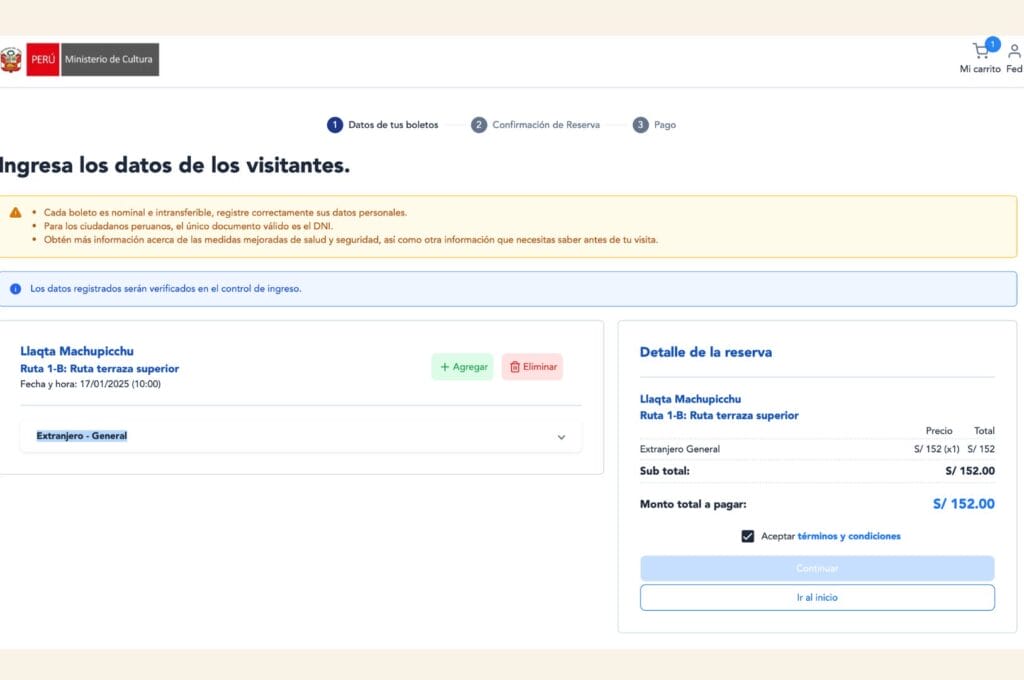
Through a tour
There are numerous tours to go to Machu Picchu! We have selected those with a good quality/price ratio for you, ranging from simple hassle-free tickets to more packed organized day trips.
Getyourguide offers official tickets on their website, and with just two clicks, you have precious tickets while having the freedom to choose your circuit and entry time slot. This can be worthwhile because the slot you desire may be fully booked on the official site but available on the platform. Check out specific tickets for circuit 1-A and circuit 3 (all itineraries).
With this tour, you are taken care of from Aguas Calientes, and the round-trip transport to Machu Picchu, entry tickets for circuit 1-B and guide are included in the price. In short, you just have to let yourself be… guided!
If you are departing from Cusco, we recommend these tours.
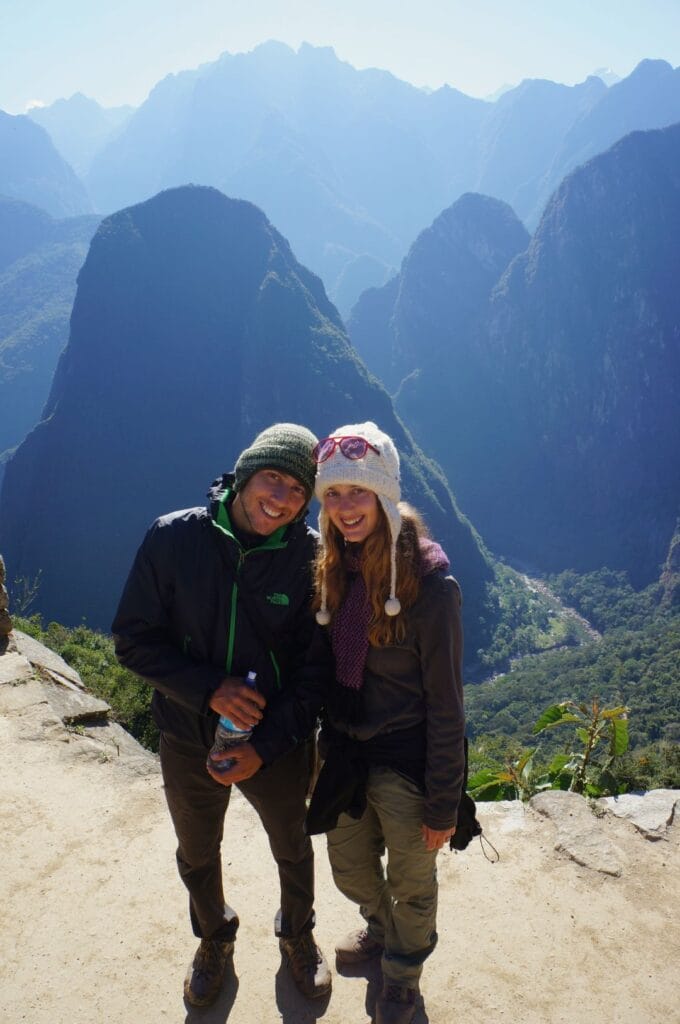
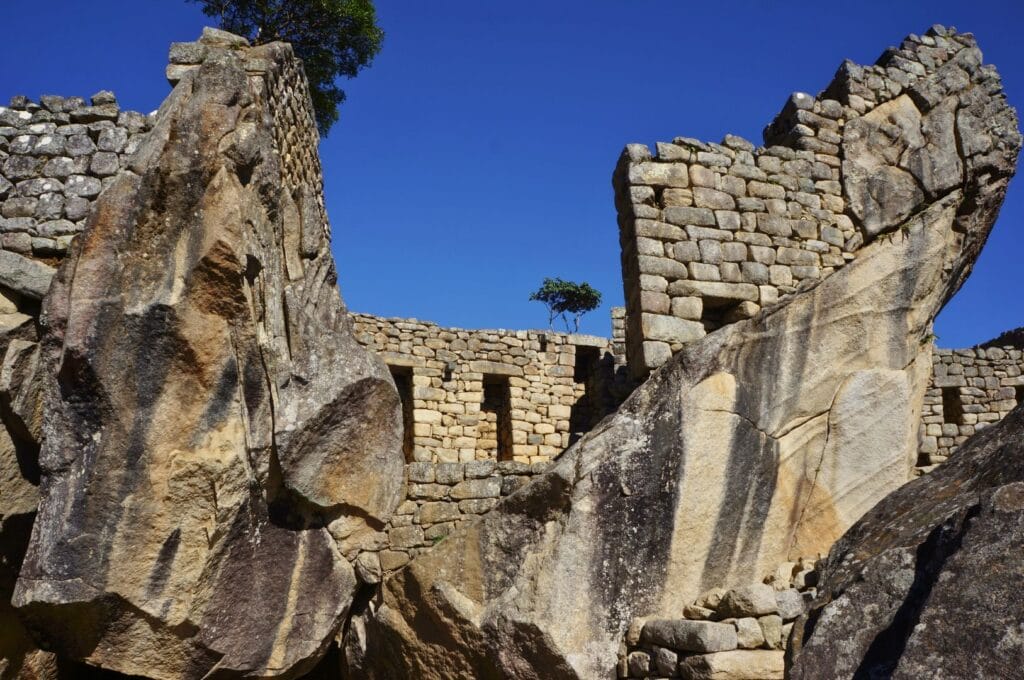
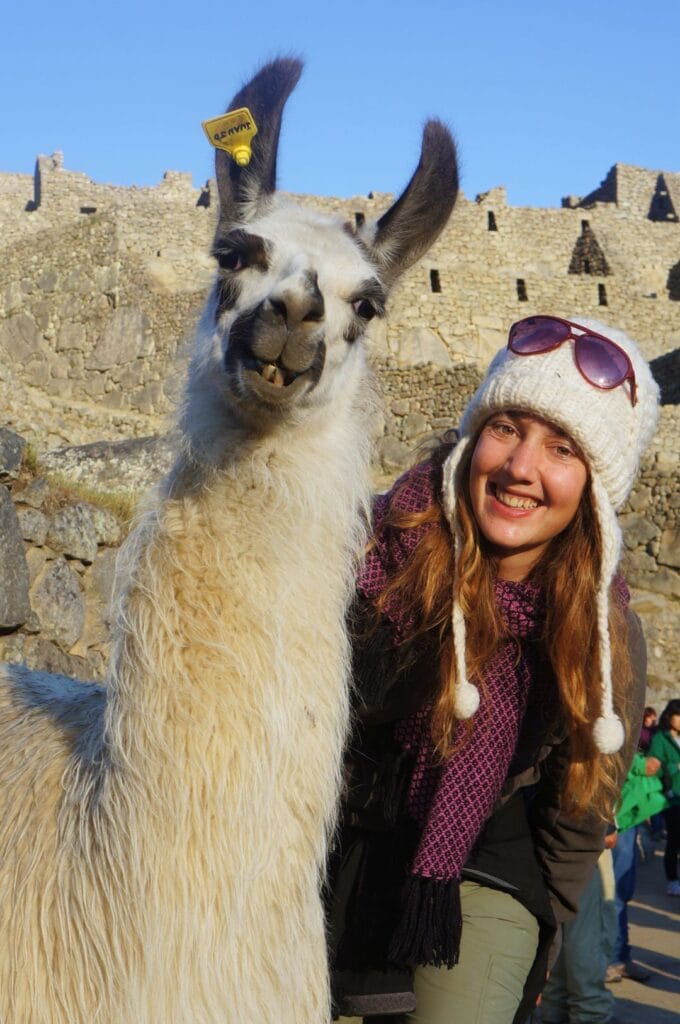
Visit Machu Picchu
Going from Aguas Calientes to Machu Picchu
Even though Aguas Calientes is at the foot of Machu Picchu, there are still 3.5 km to cover for a positive elevation gain of 605 m to reach the entrance of Machu Picchu! You can walk and climb the roughly 2000 steps!
For your information, the gate just after the bridge opens at 5 a.m. for pedestrians (5:30 a.m. for vehicles) for an opening of Machu Picchu at 6 a.m. So, you have minus 1 hour to cover 1.7 km (and 455 meters of elevation gain thanks to the steps!). Be aware, competition will be tough to arrive first and especially before the numerous buses 😉. We woke up at 4 a.m. and the timing was just right! Read our story about our early-morning adventure in the world’s most famous Inca city.
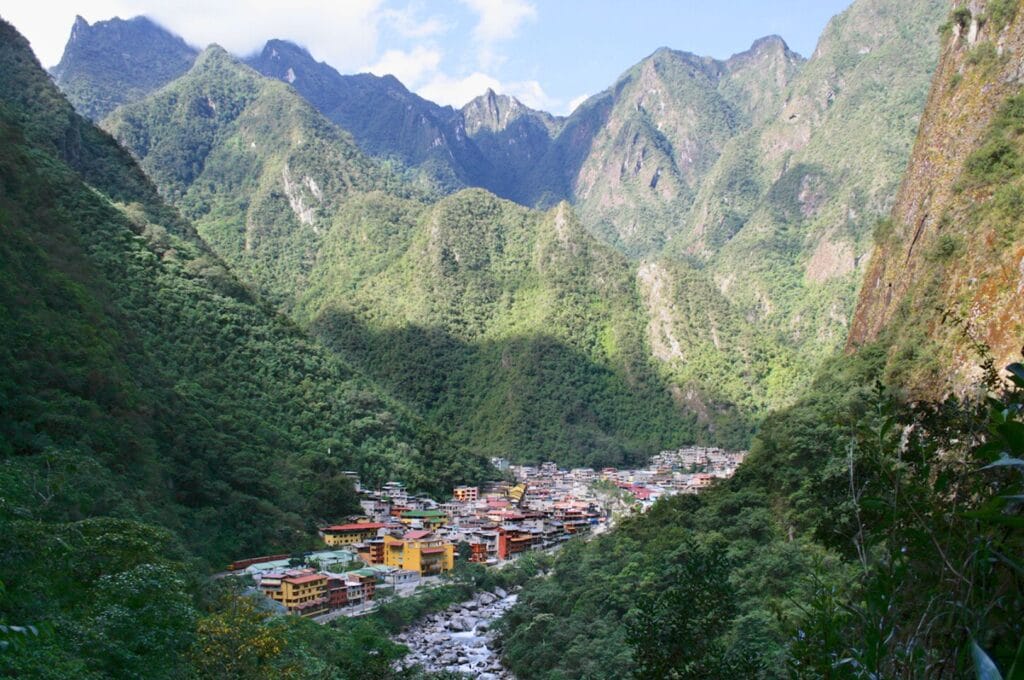
The alternative is to take a bus from the center that will drop you off right at the entrance of Machu Picchu at 6 a.m. sharp. We agree the price is a bit steep, 35 dollars per person for a round trip between Aguas Calientes and Machu Picchu. However, it is the only way to reach the Inca citadel if your physical condition does not allow you to climb the stairs (and also not to leave your muscles and lungs down below). We strongly advise you to book your round-trip ticket or one-way ticket in advance because the line is long in the early morning but also to return after the visit. The waiting time can reach 3-4 hours at rush hours!
The visit and guides
Depending on the circuit you have chosen, the visit ranges from 1.5 to 3 hours. Since guides are not required to tour Machu Picchu, you can visit at your leisure, following your own itinerary. The downside is that there are no explanations on-site… Unless you are already well-versed in the Incas, we recommend the services of a guide. You will find them on-site for visits mainly in Spanish or English.
Oh, and don’t forget to have your passport stamped before leaving, it’s free and a nice souvenir from Machu Picchu 😉.
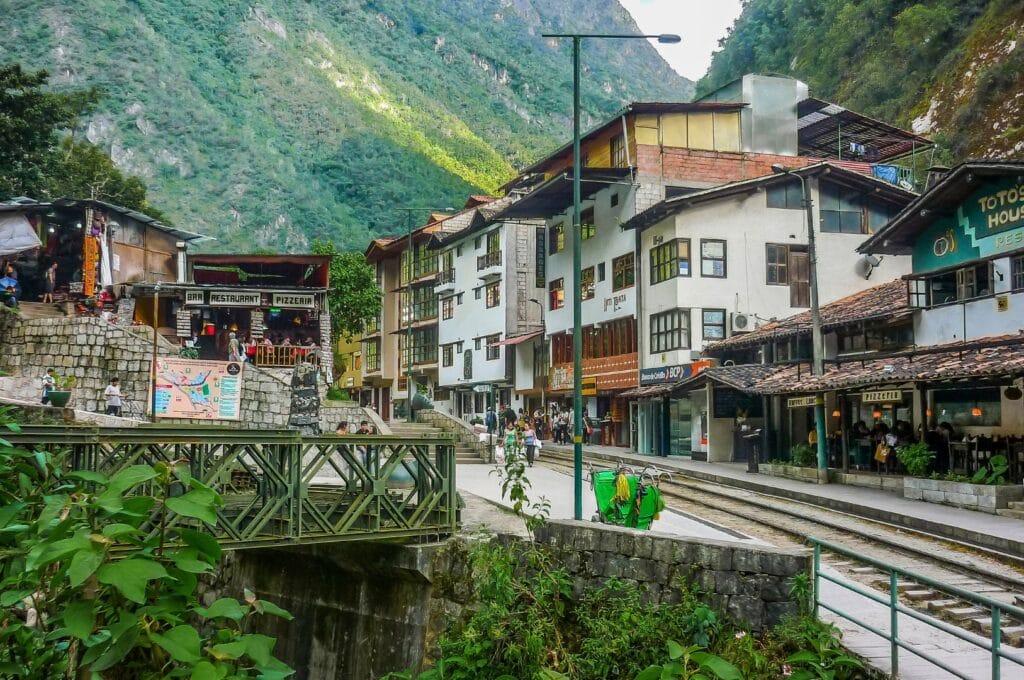
The return
The return to Aguas Calientes is done the same way as the departure: either by stairs (it’s downhill now!) or by bus.
If you want to return to Cusco on the same day by bus, consider that you must be at Hidroelectrica by 1:30-2:00 p.m. at the latest, the time when the last buses leave for Cusco (7-hour journey). In this case, take into account the 2-3 hours walk between Aguas Calientes and Hidroelectrica, which means you will exit Machu Picchu at around 11 a.m. The timing can be tighter or looser depending on the circuit you choose. It’s up to you whether you prefer to take your time to visit properly even if it means staying another night in Aguas Calientes or returning directly to Cusco to continue with the rest of your trip in Peru.
Returning to Cusco by train is easier and faster because trains depart directly from the Machu Picchu station in Aguas Calientes to arrive in Cusco. The journey takes 4 hours and the ticket price starts from 55 dollars.
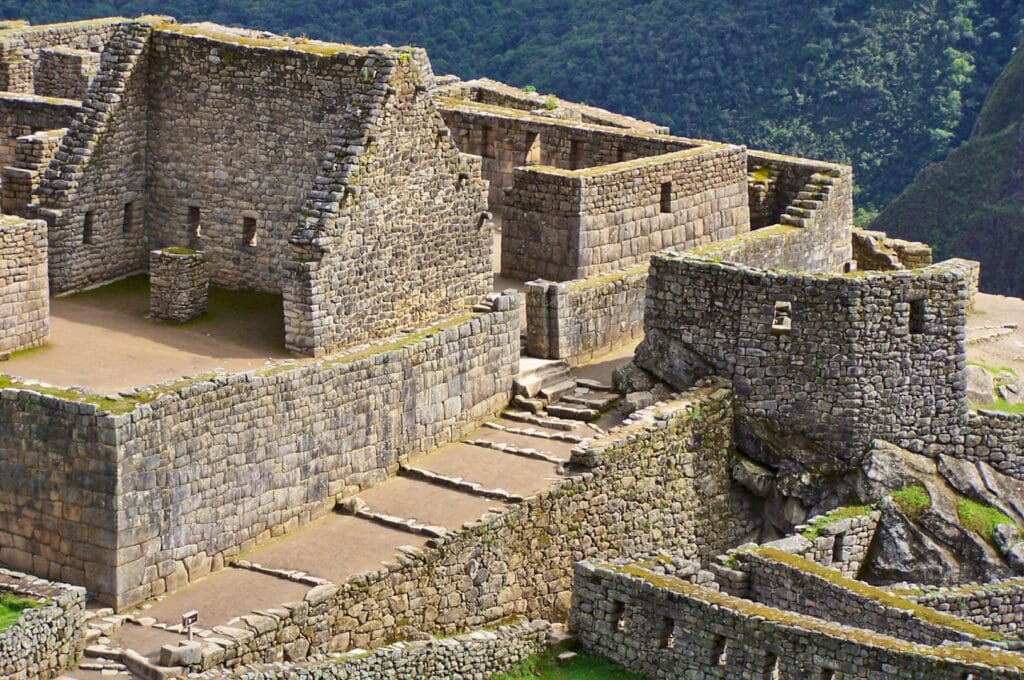
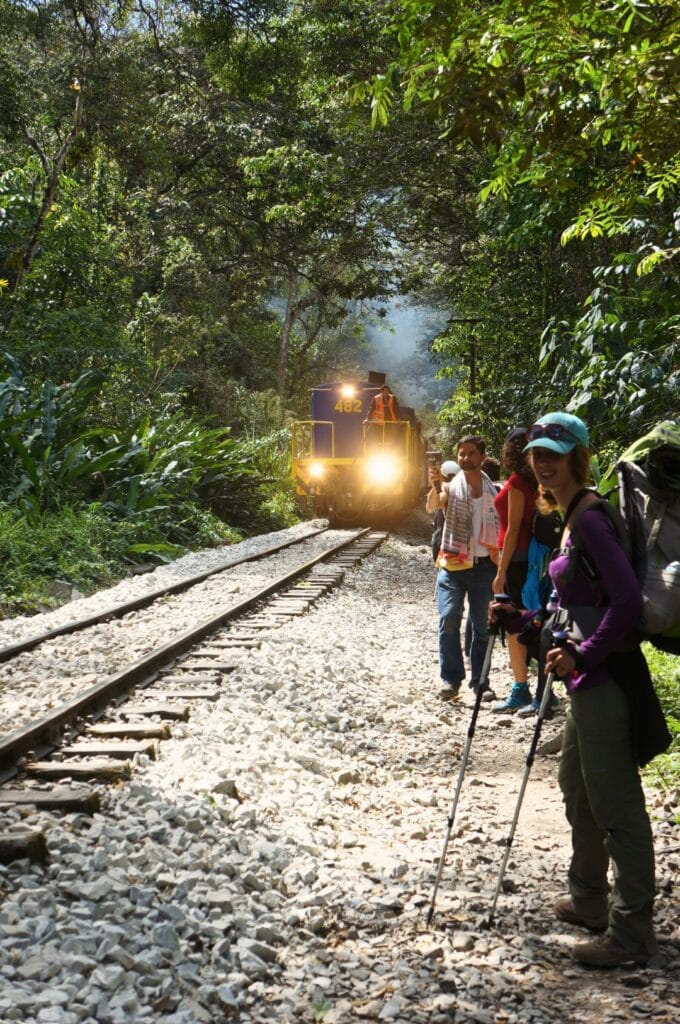
Last practical advice
- Machu Picchu is open from 6 a.m. to 4:15 p.m., and it’s during the last hours that the site is least crowded. Everyone aims for sunrise or the first light of the day.
- Normally, each ticket gives you access to Machu Picchu for 4 hours, but there seems to be no control (except for the mountains where you must respect your time slot).
- There are no toilets within the Machu Picchu site, only at the exit, and they are chargeable (2 soles)… Plan ahead because if you exit, you won’t be able to re-enter without a new ticket.
- Eating is forbidden on the entire site, but there seems to be a little tolerance…
- Hiking sticks are reserved for the elderly or those with reduced mobility on the site, but it seems you can use them to ascend the different mountains of Machu Picchu.
- We recommend wearing several layers of clothing and taking a waterproof jacket (umbrellas are prohibited). The weather remains very uncertain in the Andes!
- Only take your small backpack, over 20 liters are prohibited, but lockers (5 soles) are available at the entrance.
- Remember to bring your passport for the visit, otherwise, you will be refused access at the check-in.
- Make sure to acclimatize in Cusco (or Huaraz) before visiting Machu Picchu to avoid altitude sickness.
There you go, I think we’ve covered everything about visiting Machu Picchu! Do you have a question? Ask us in the comments! We conclude this chapter with the review and budget of our trip to Peru.
Pin it
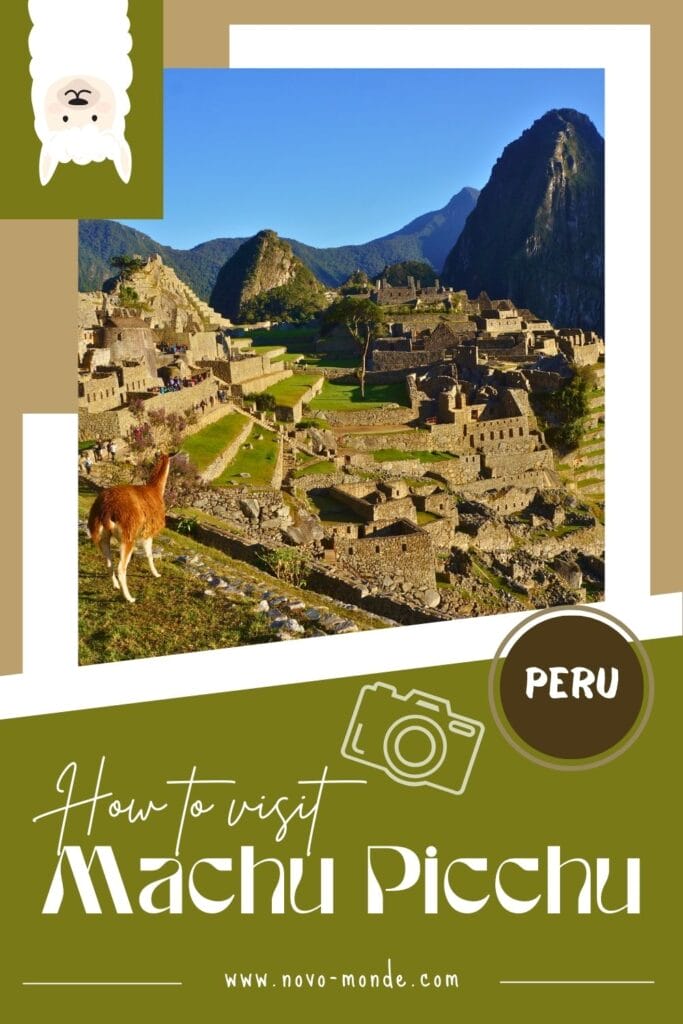
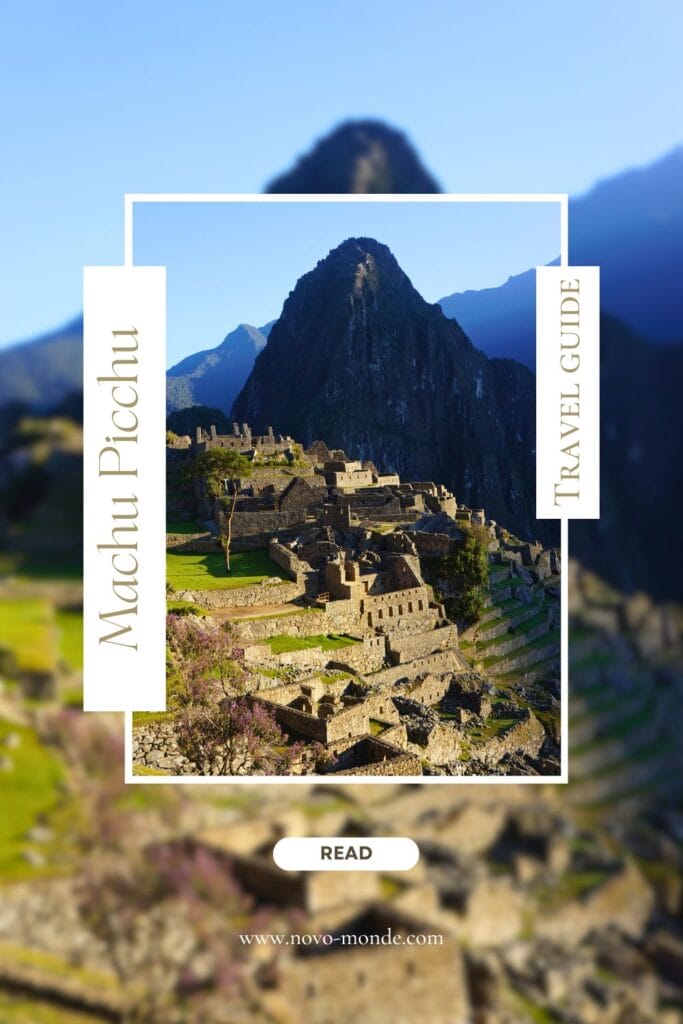
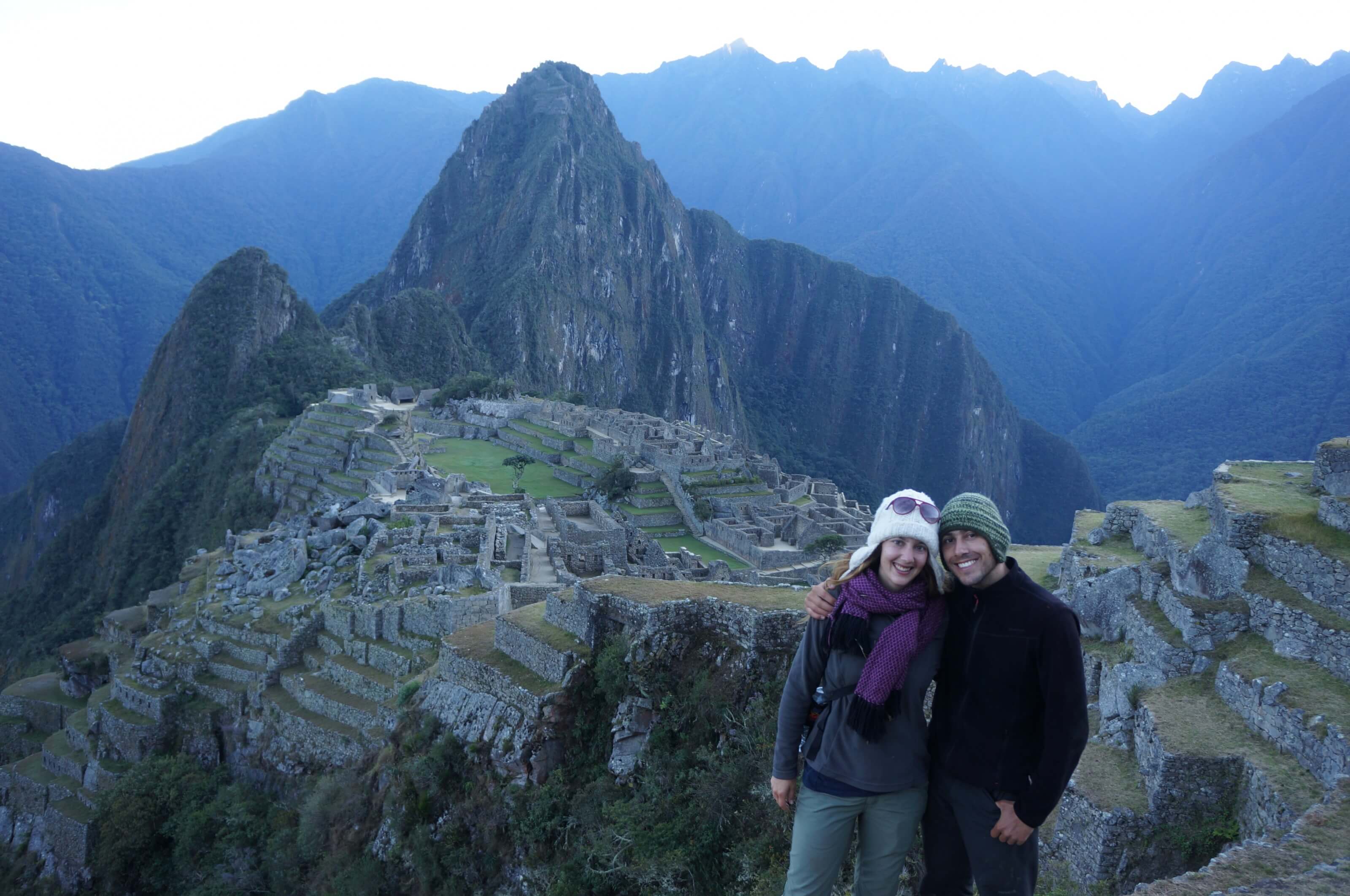
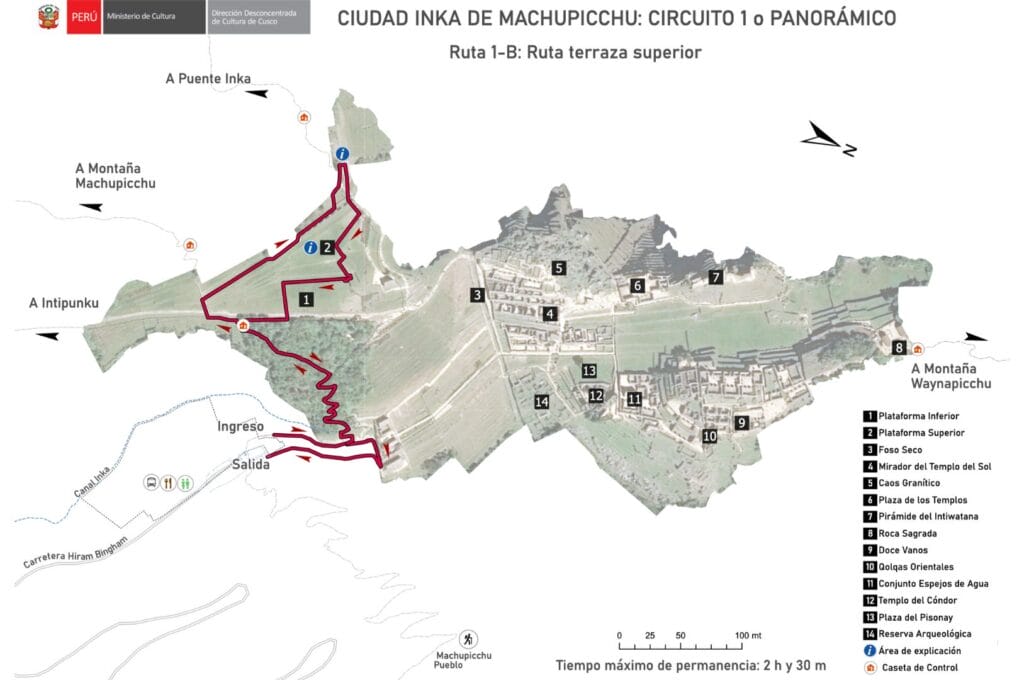
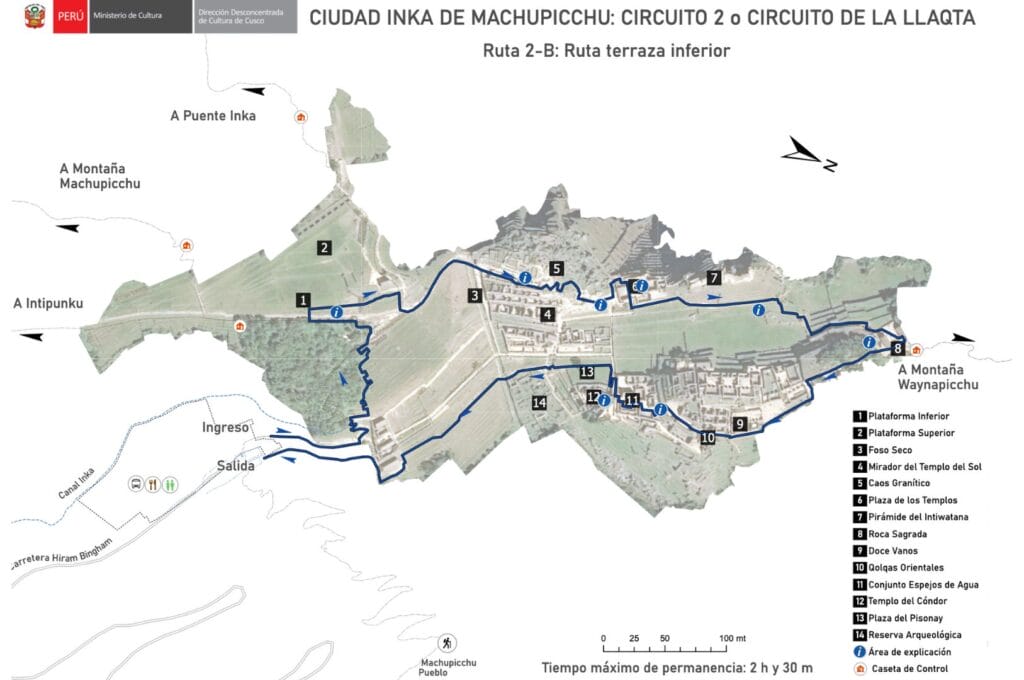
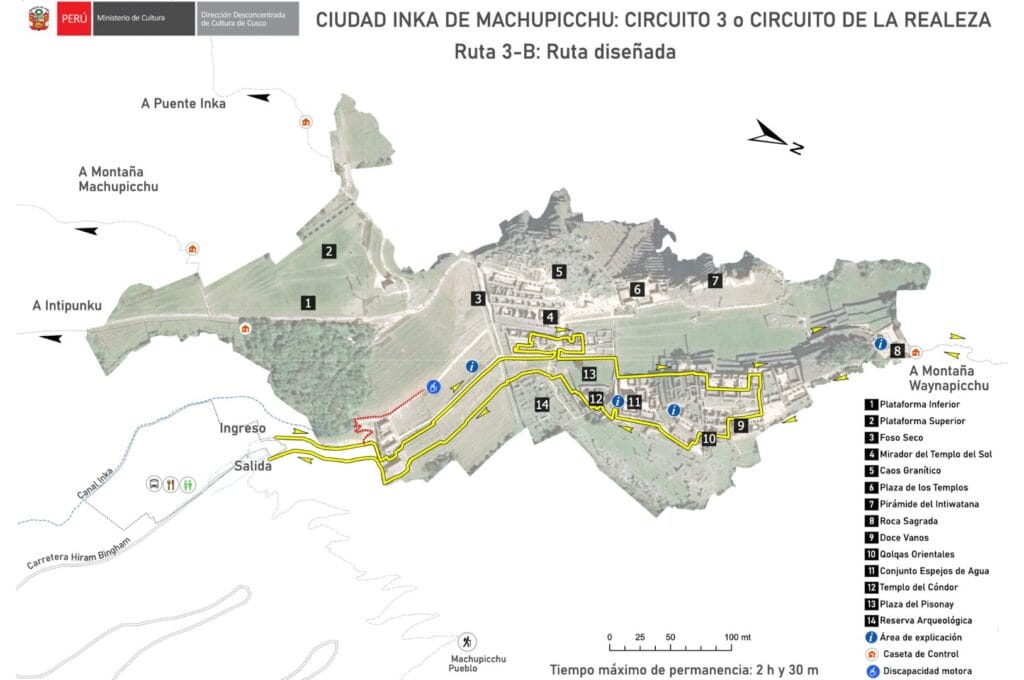
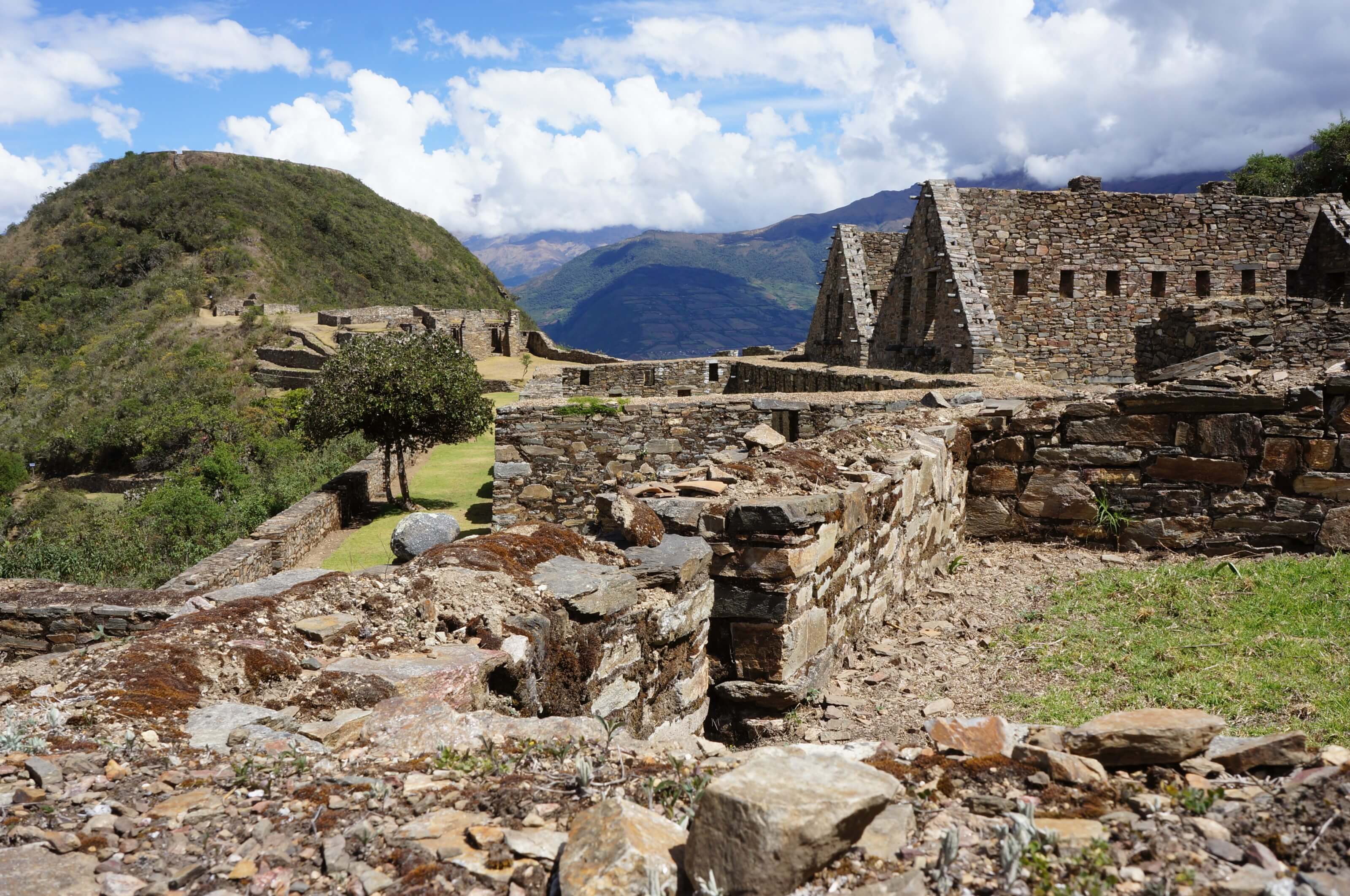
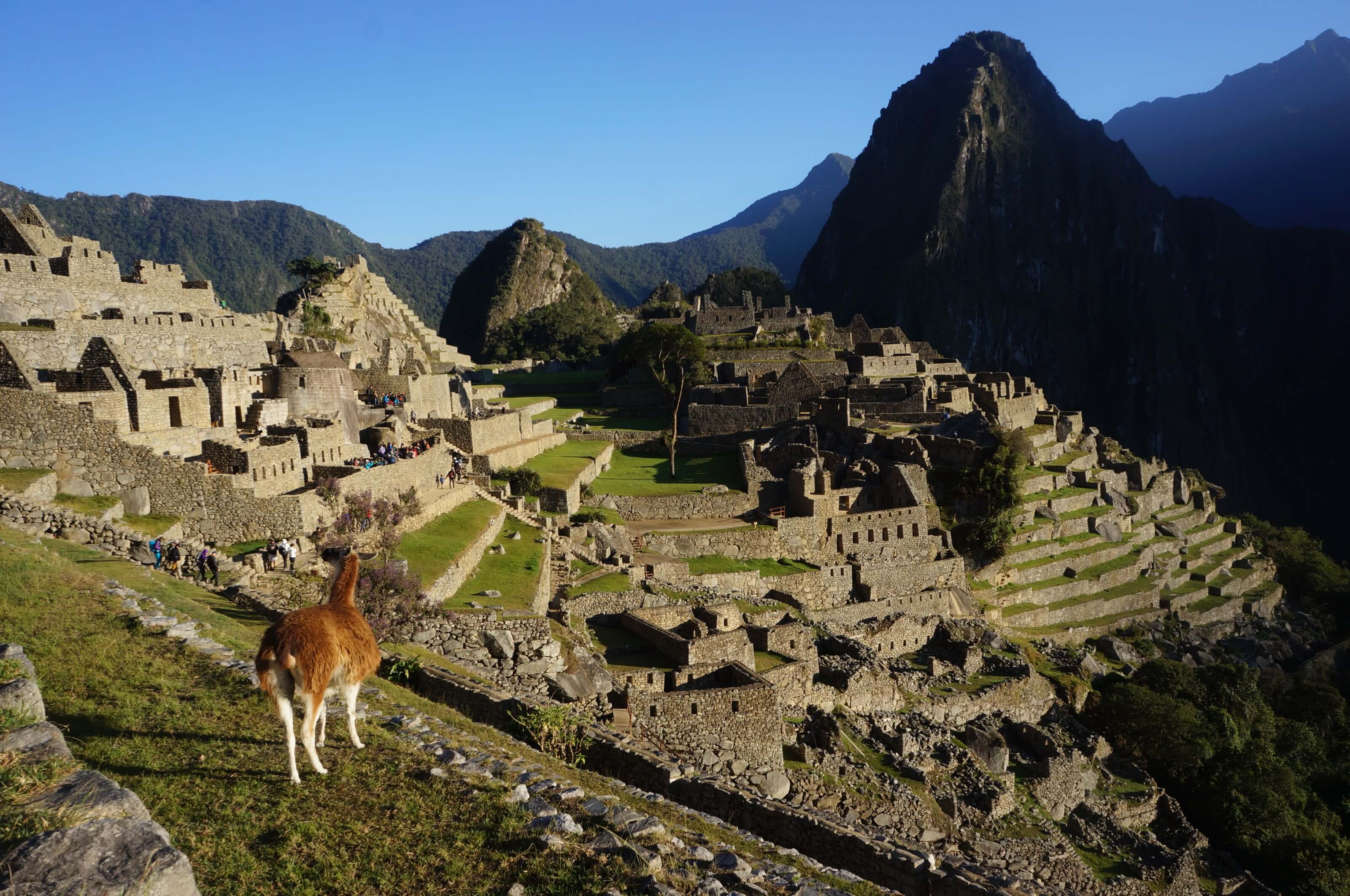
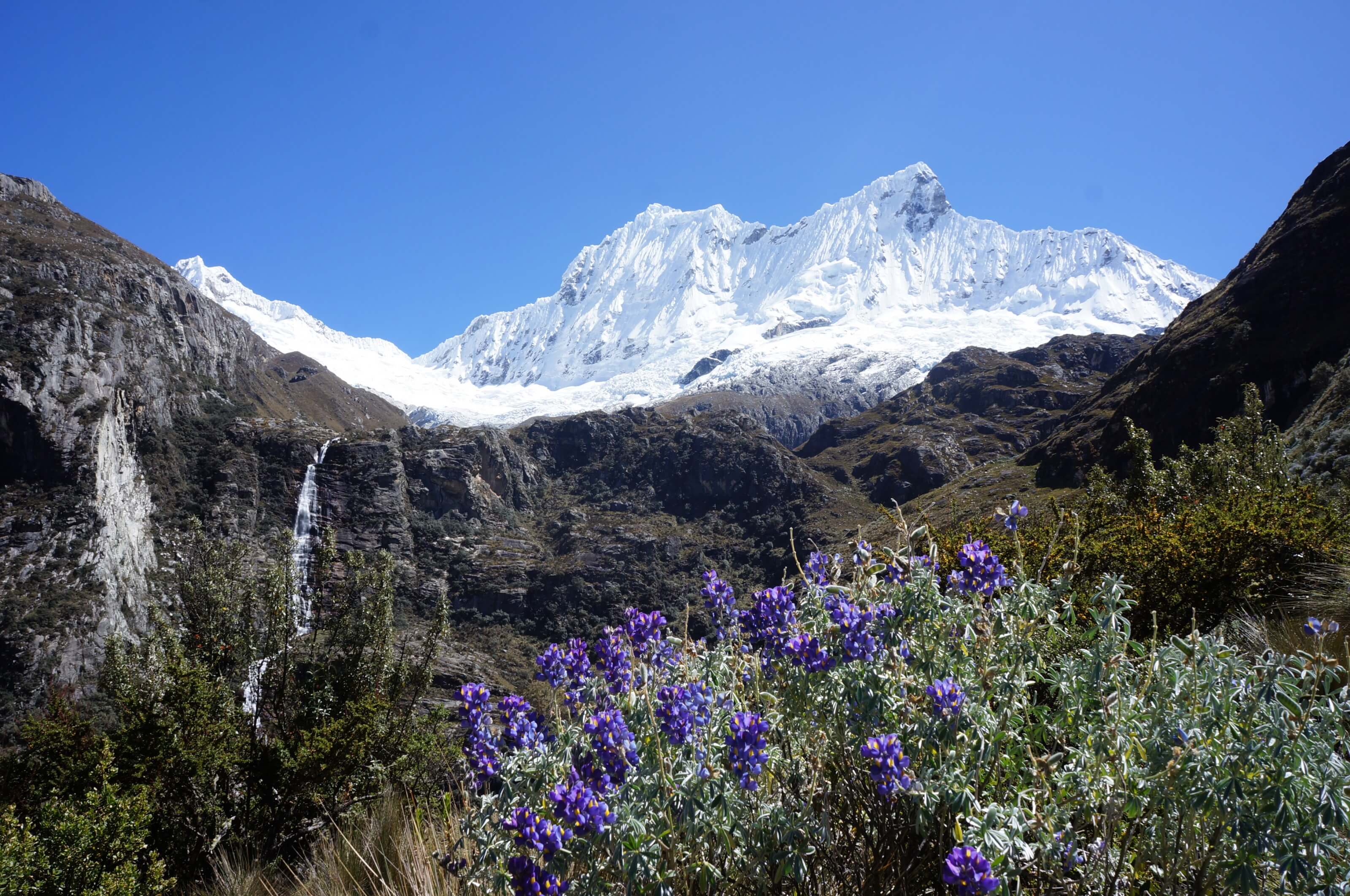
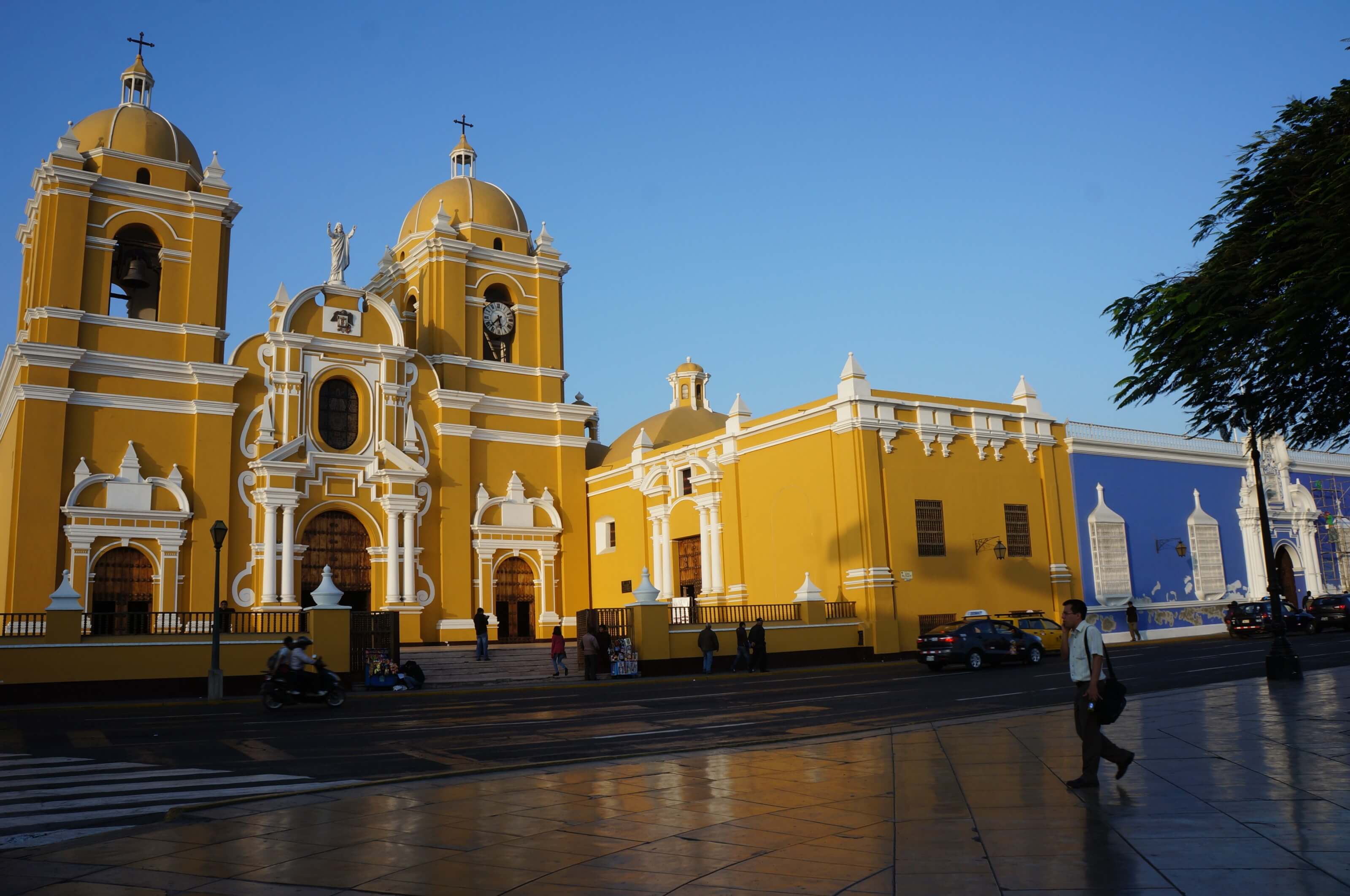
Join the discussion